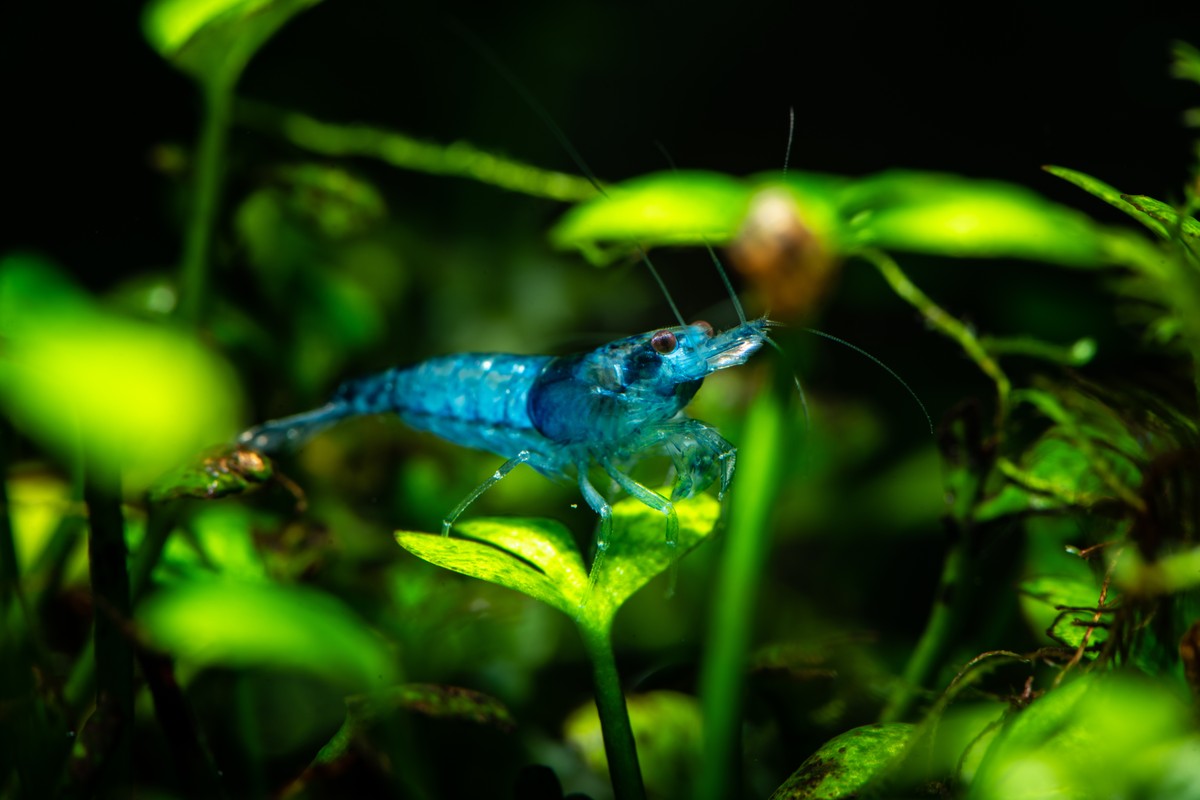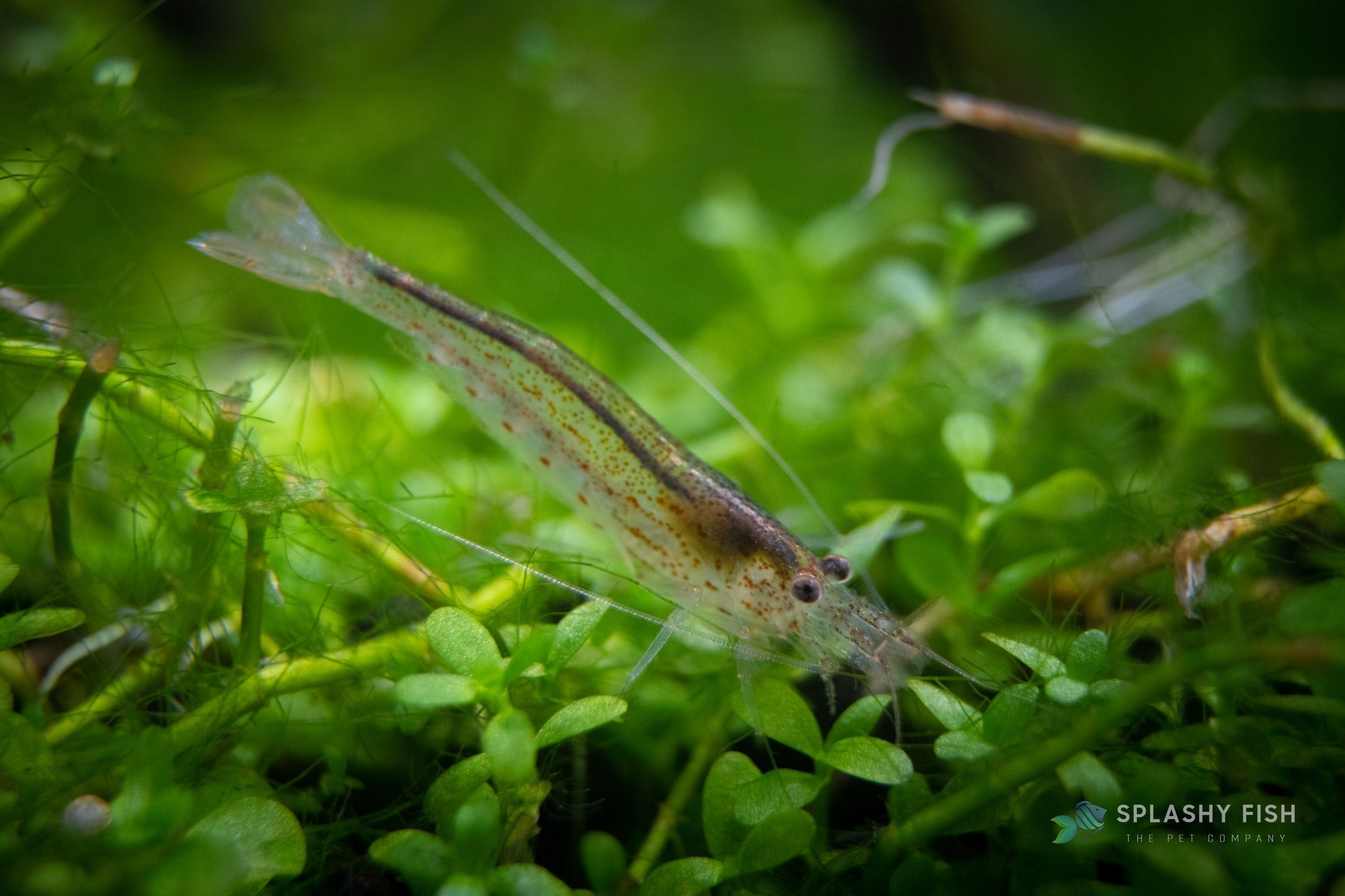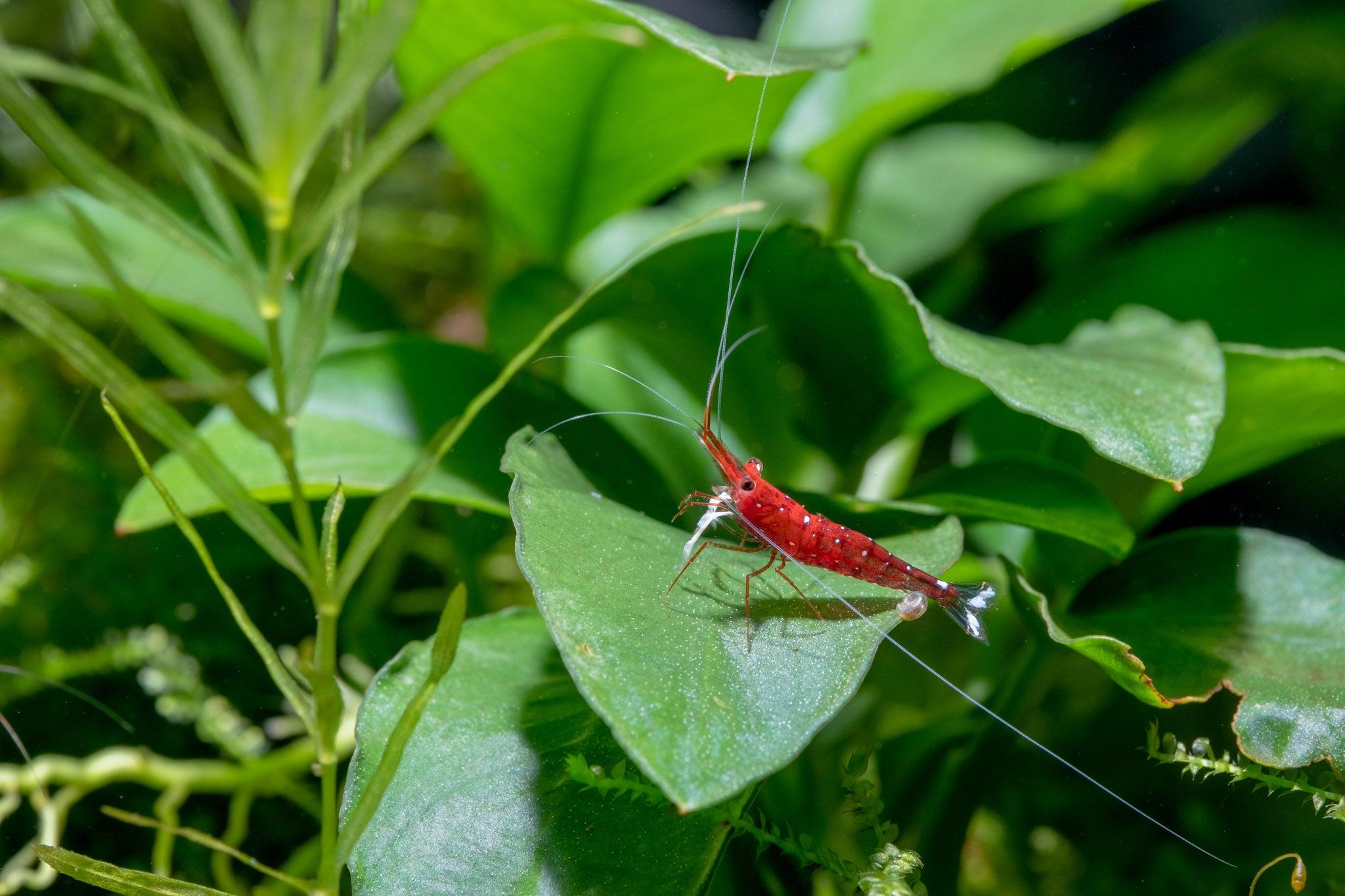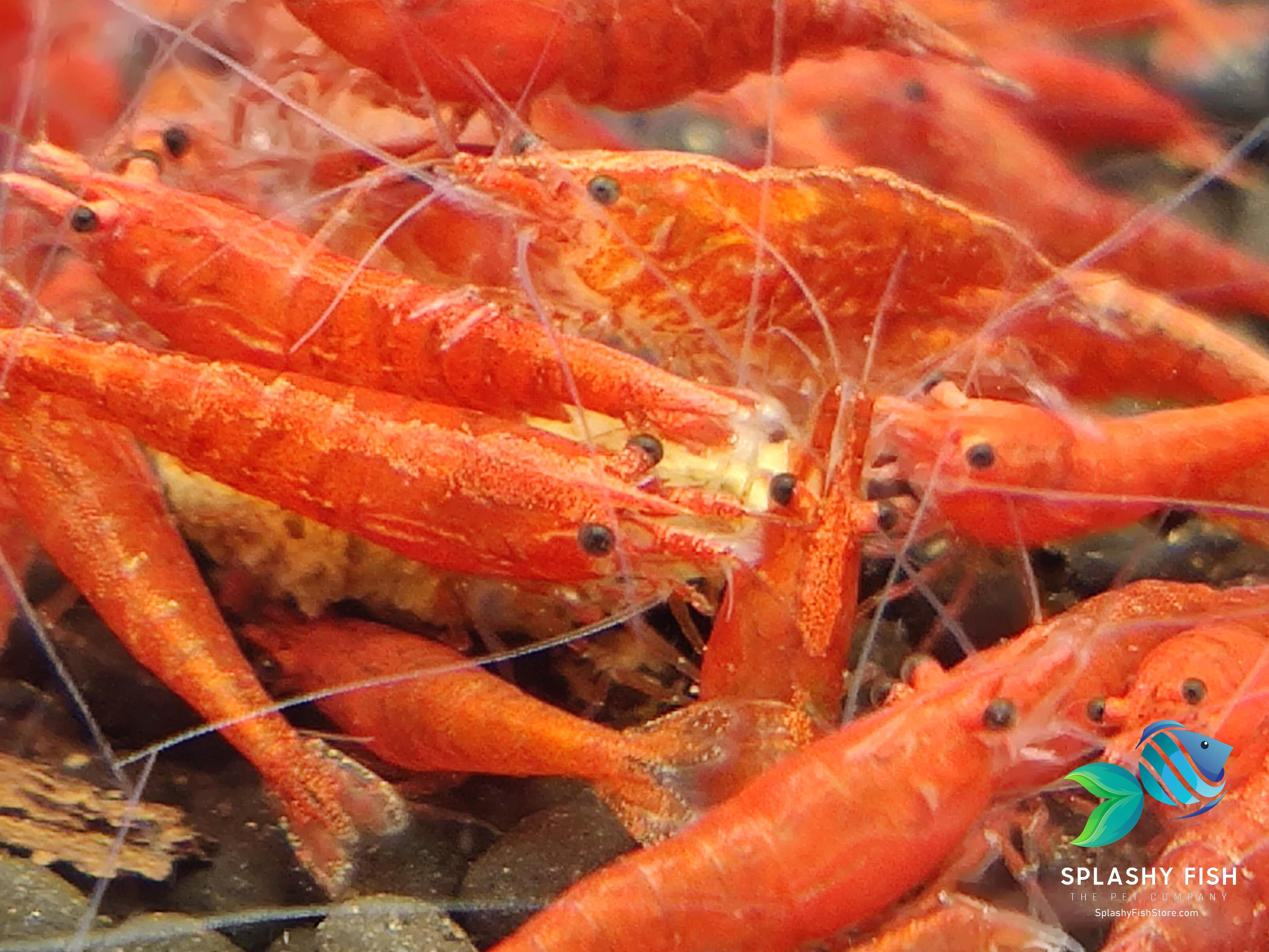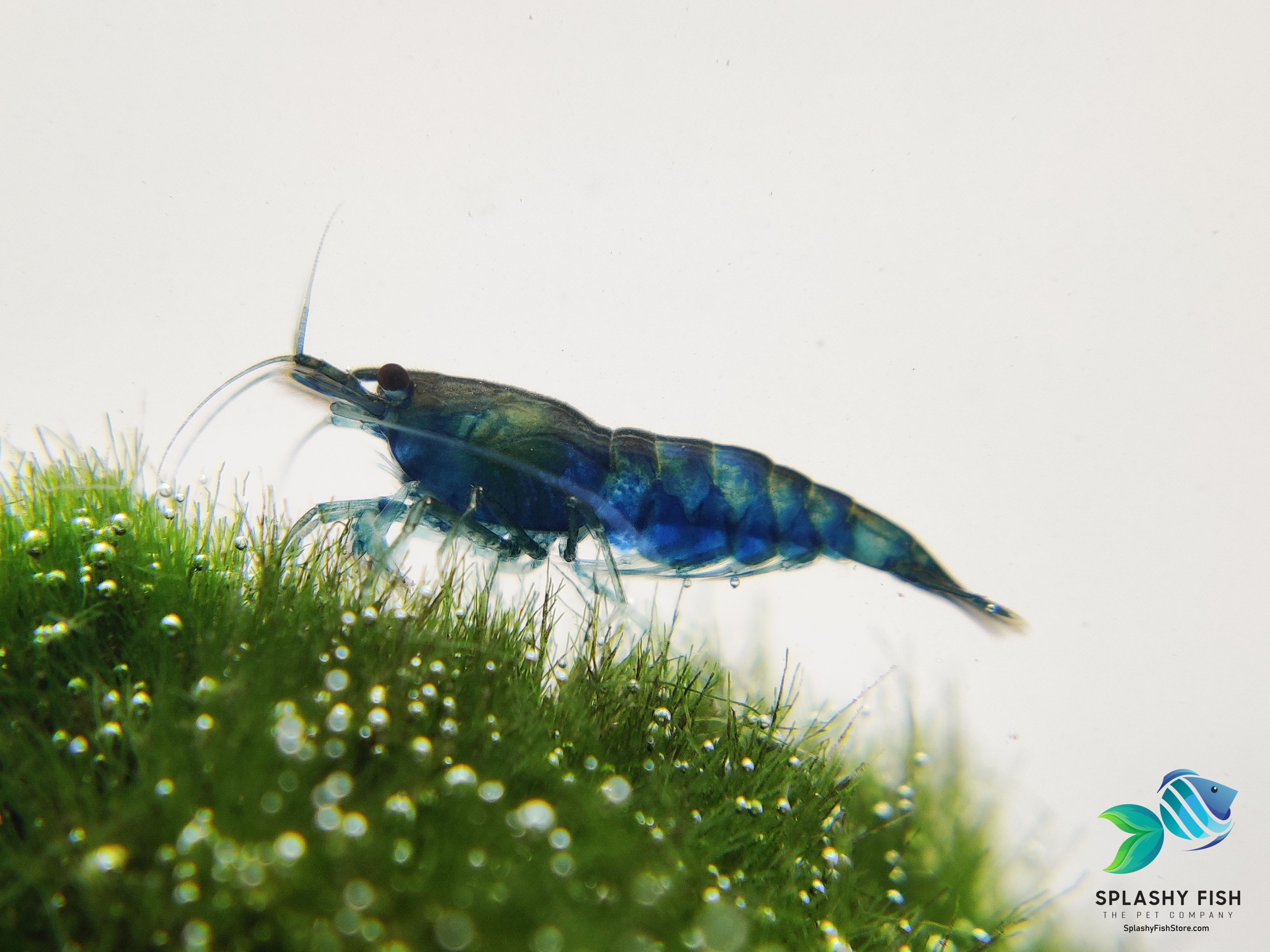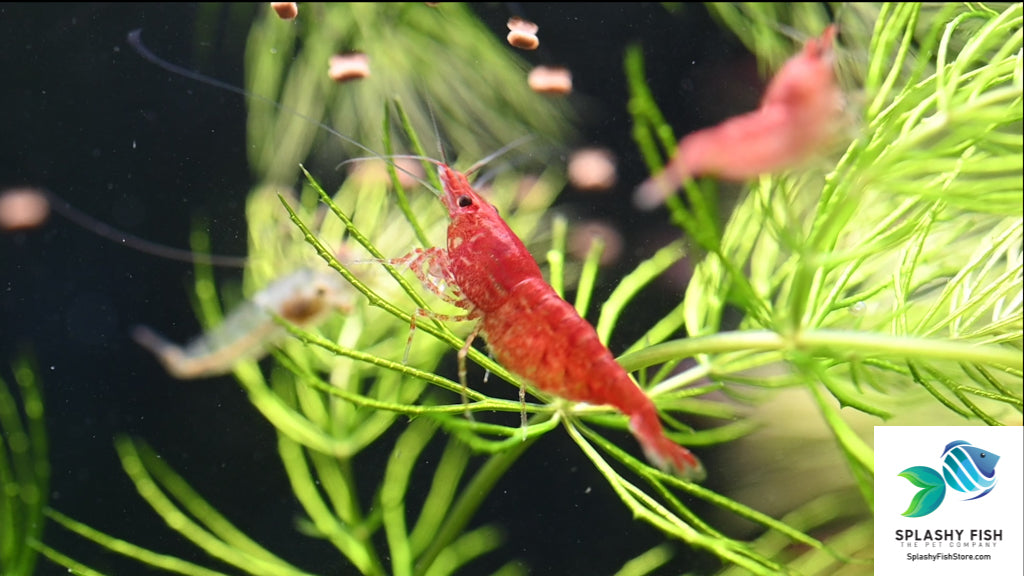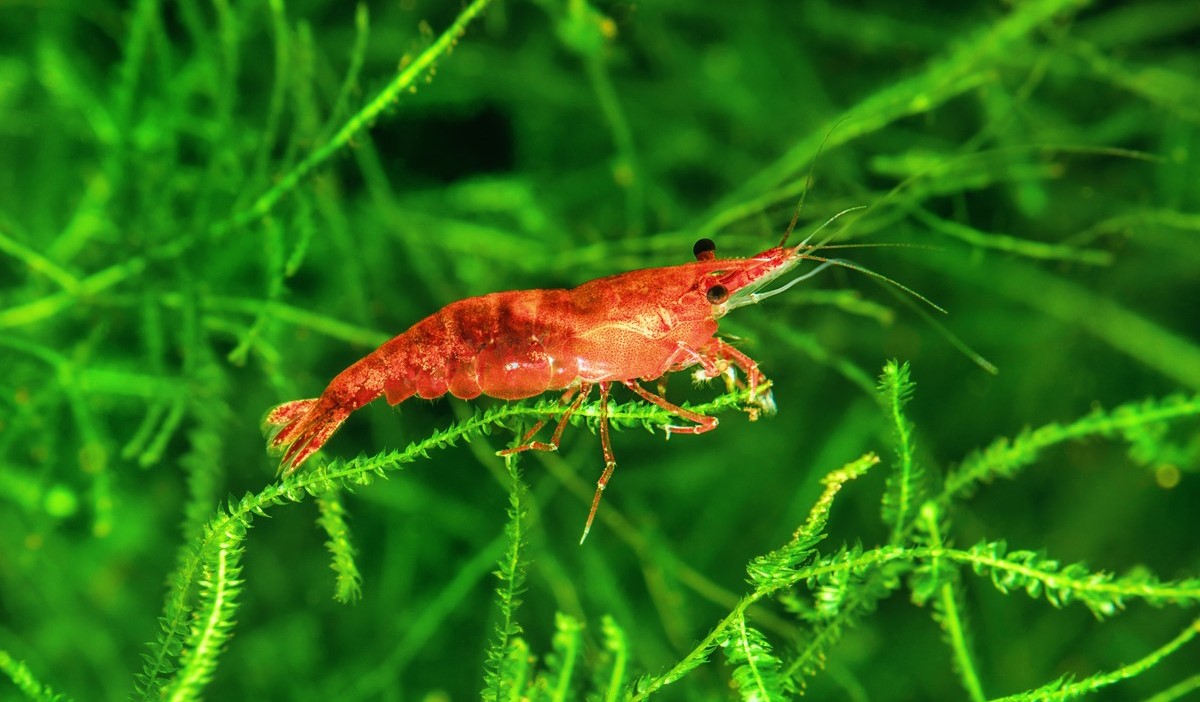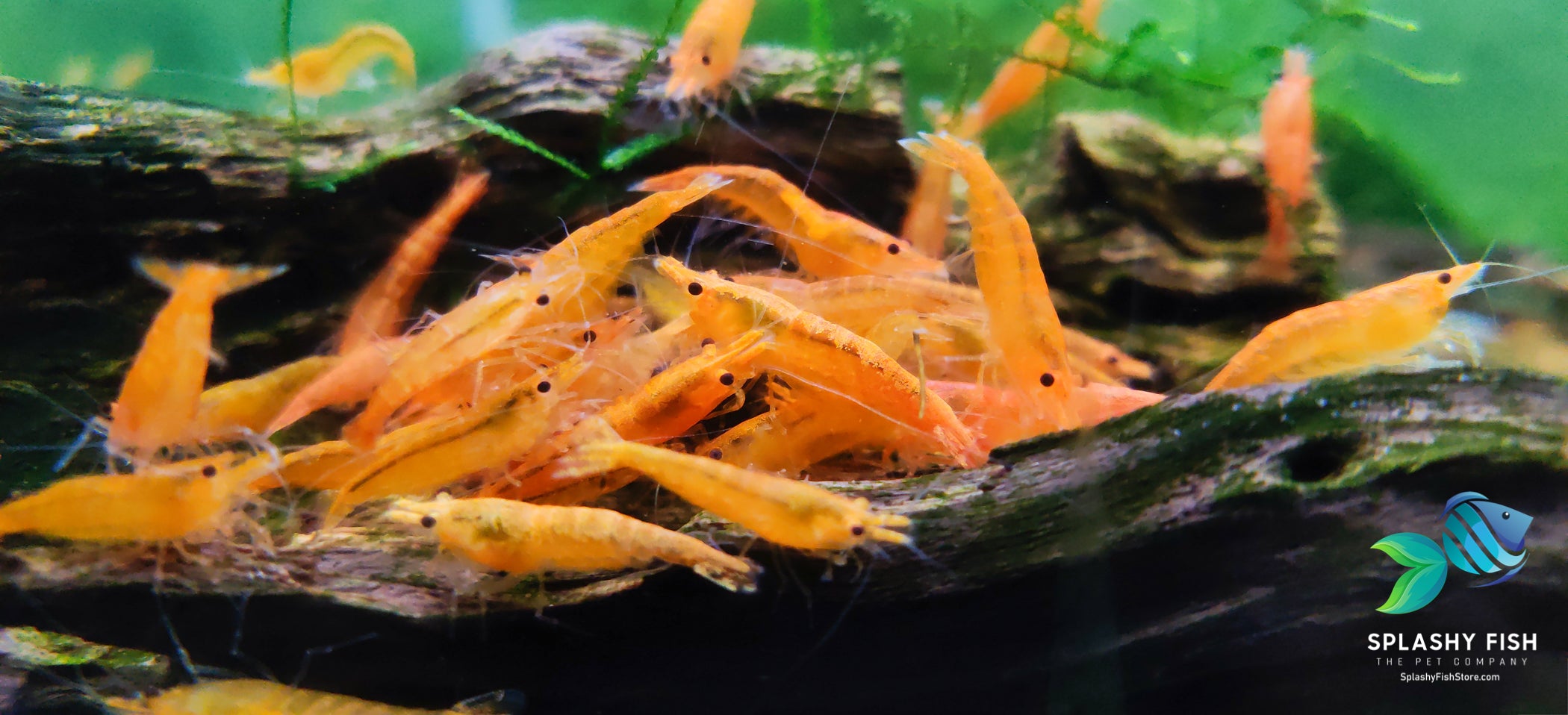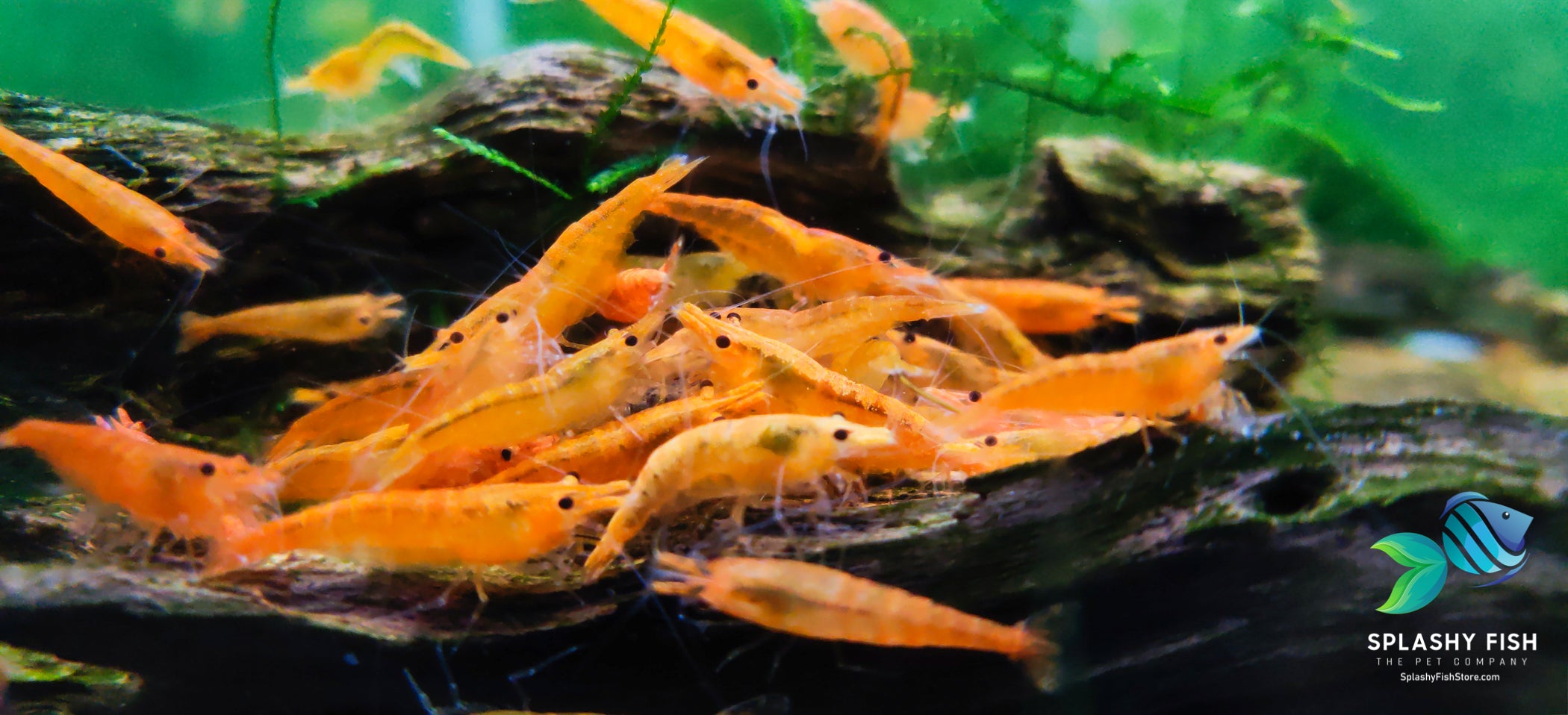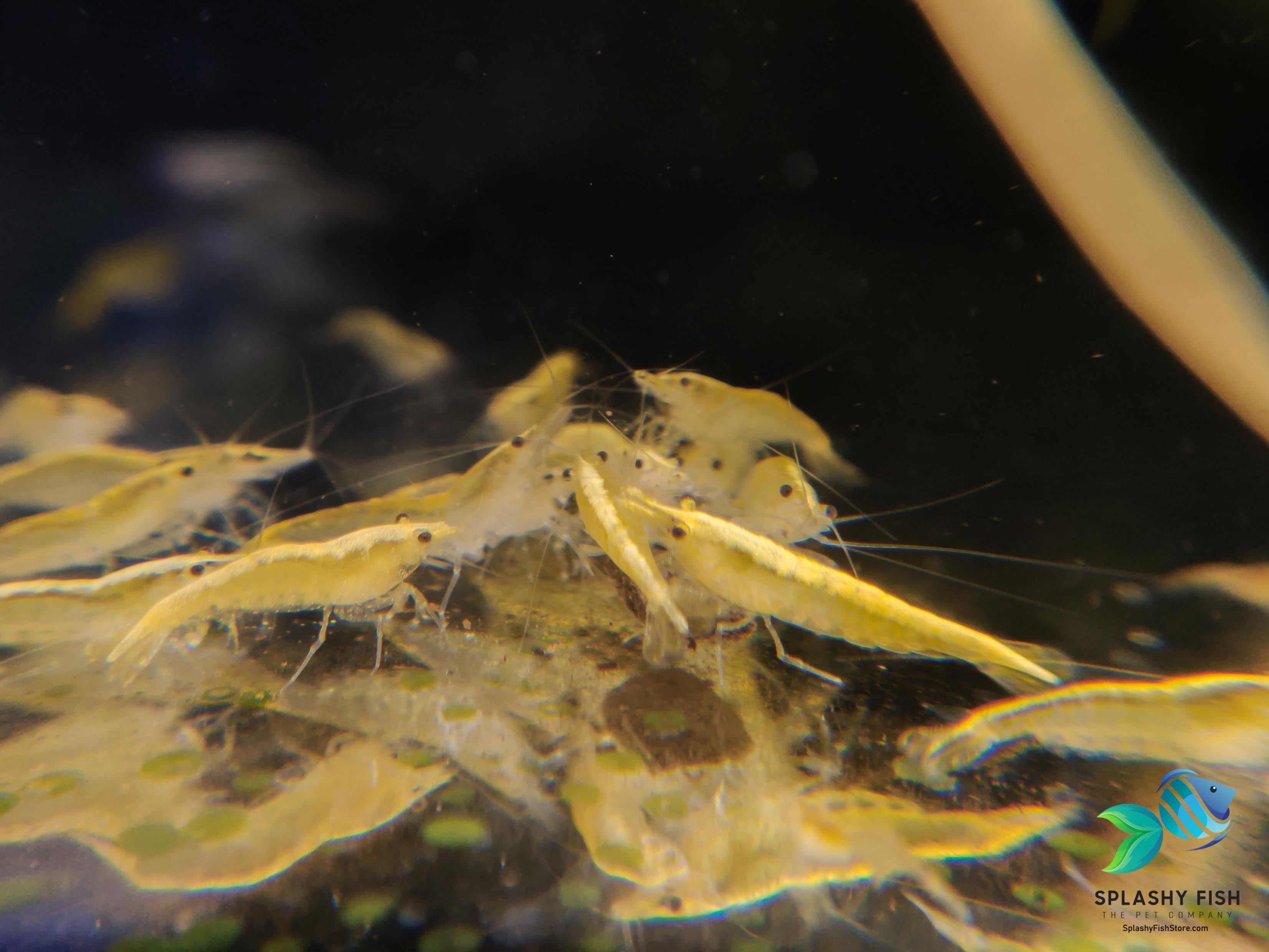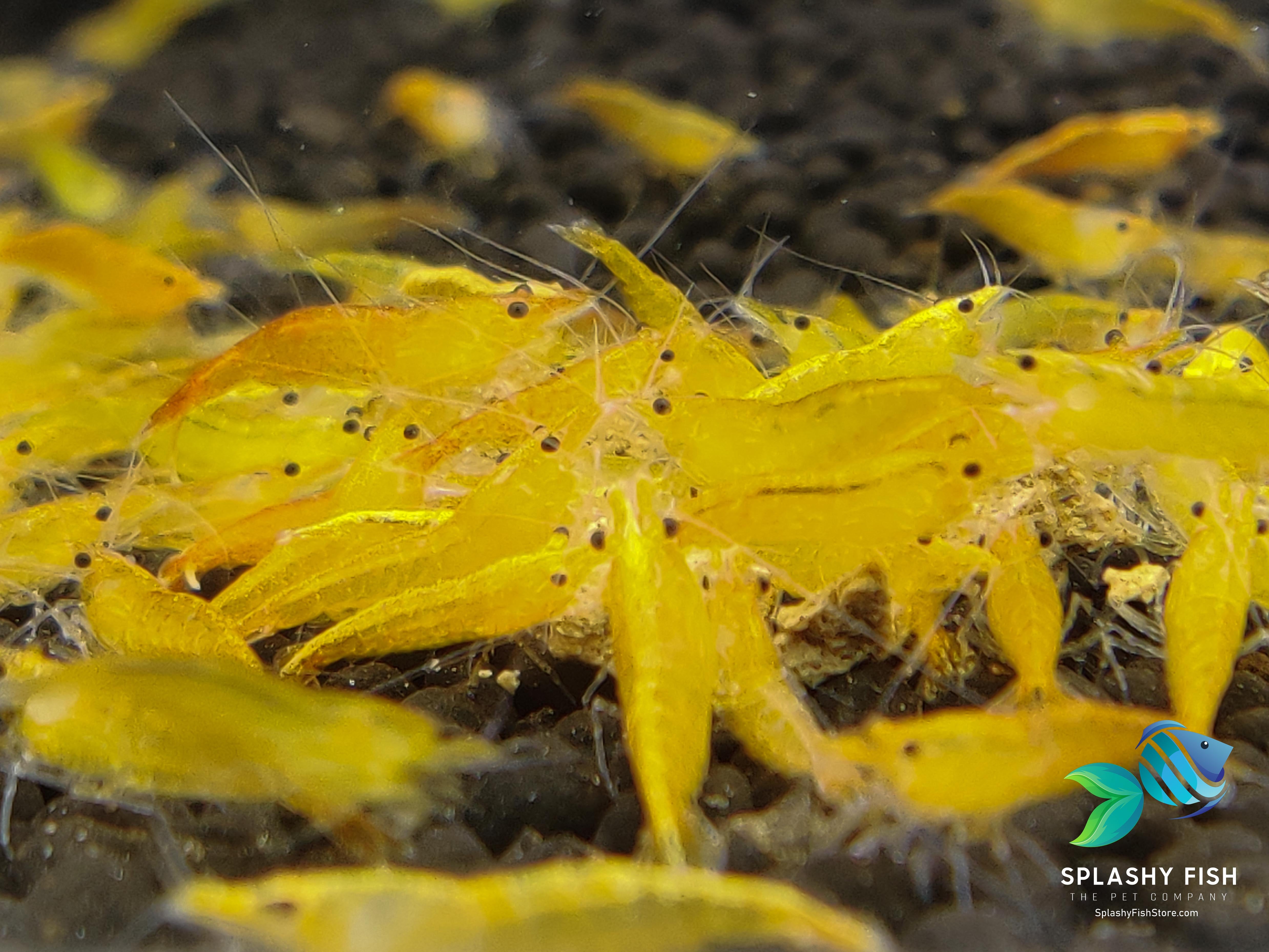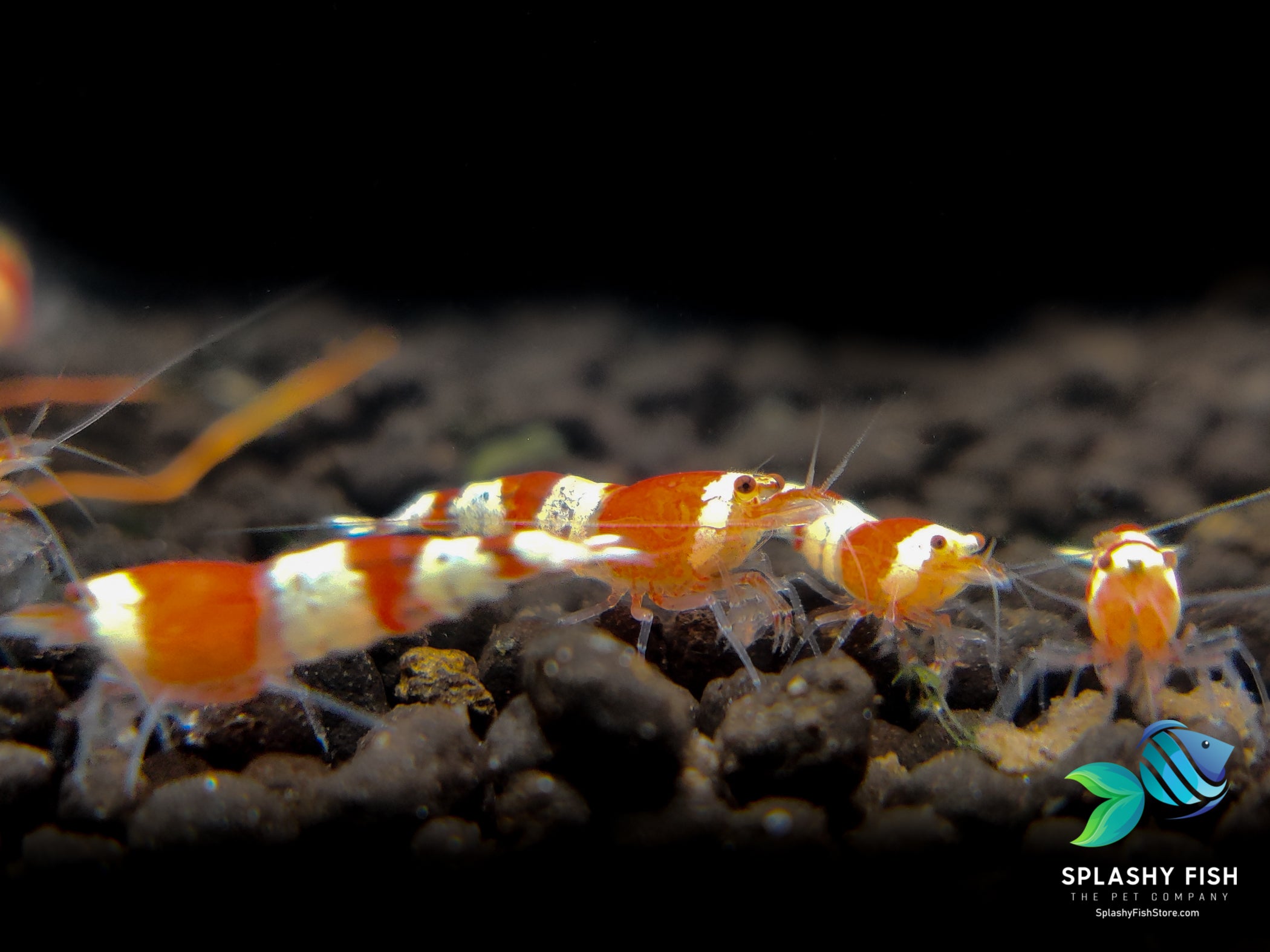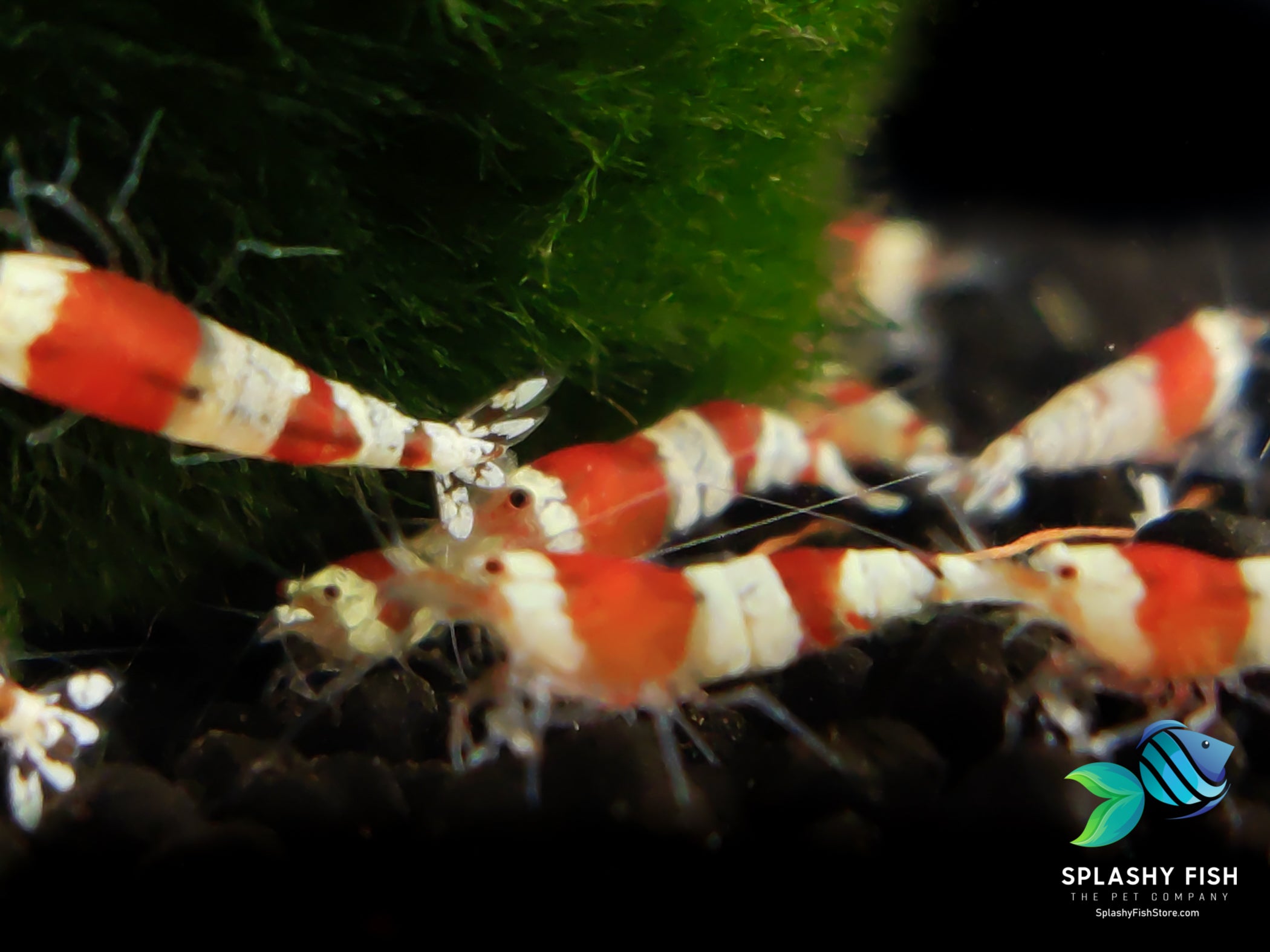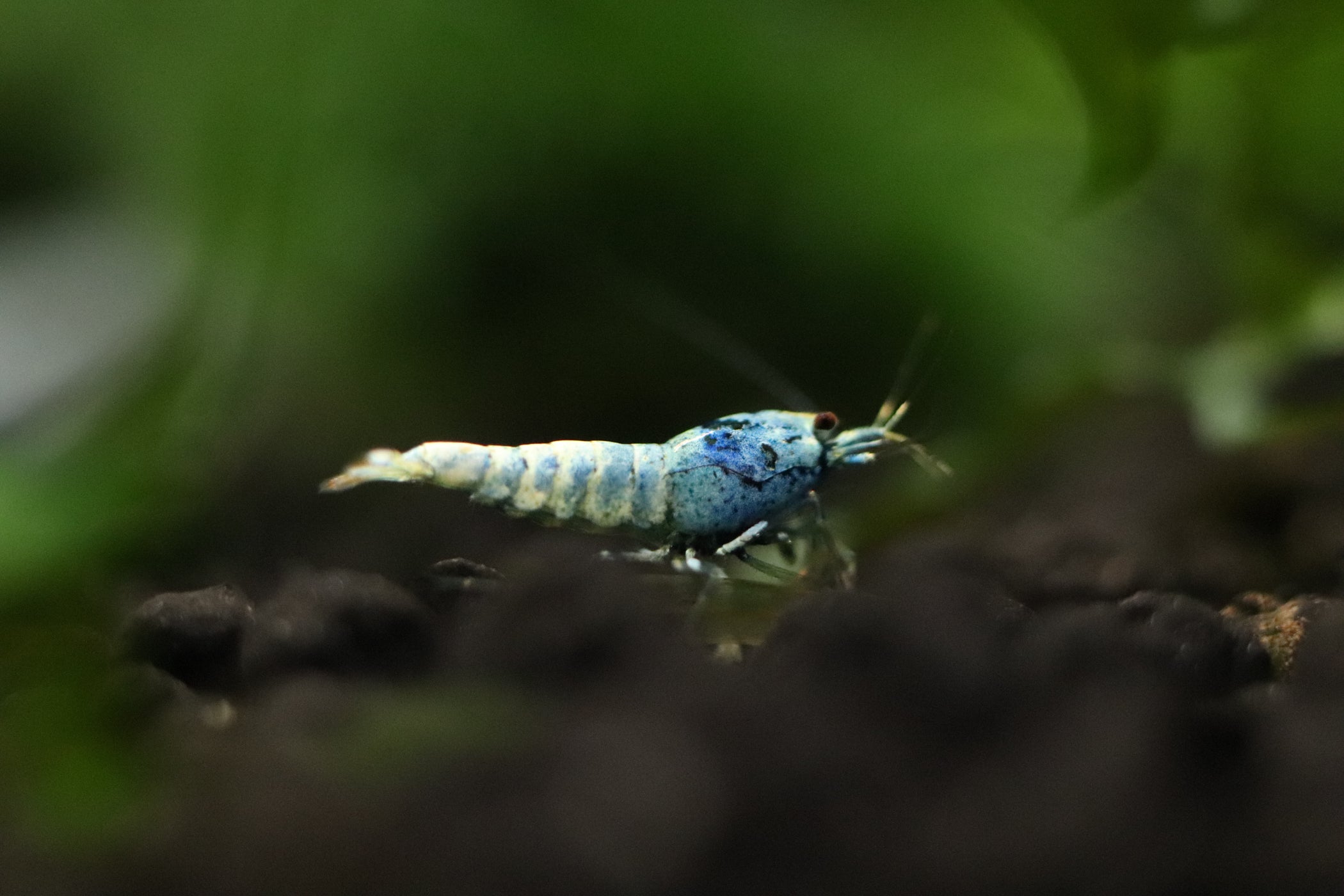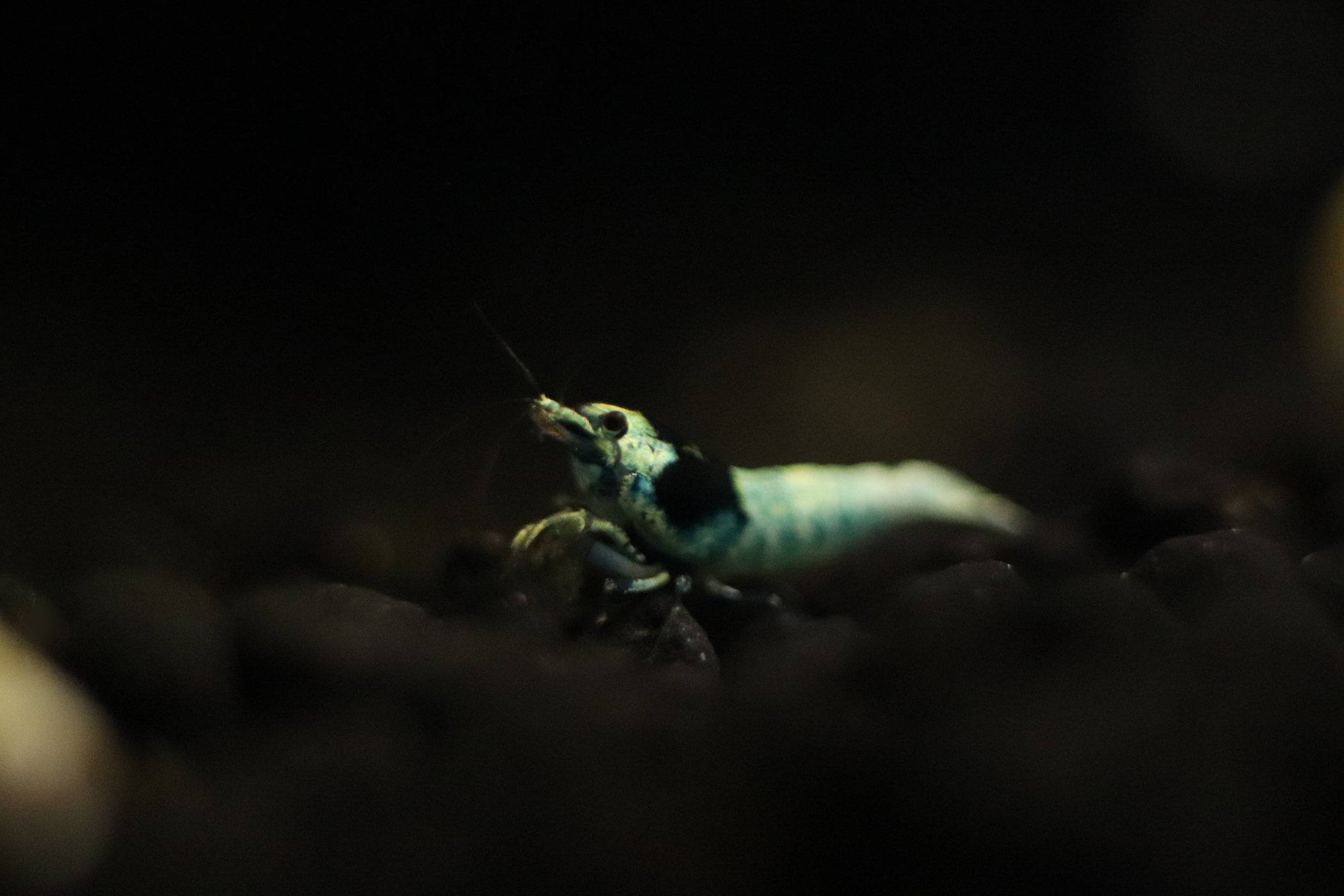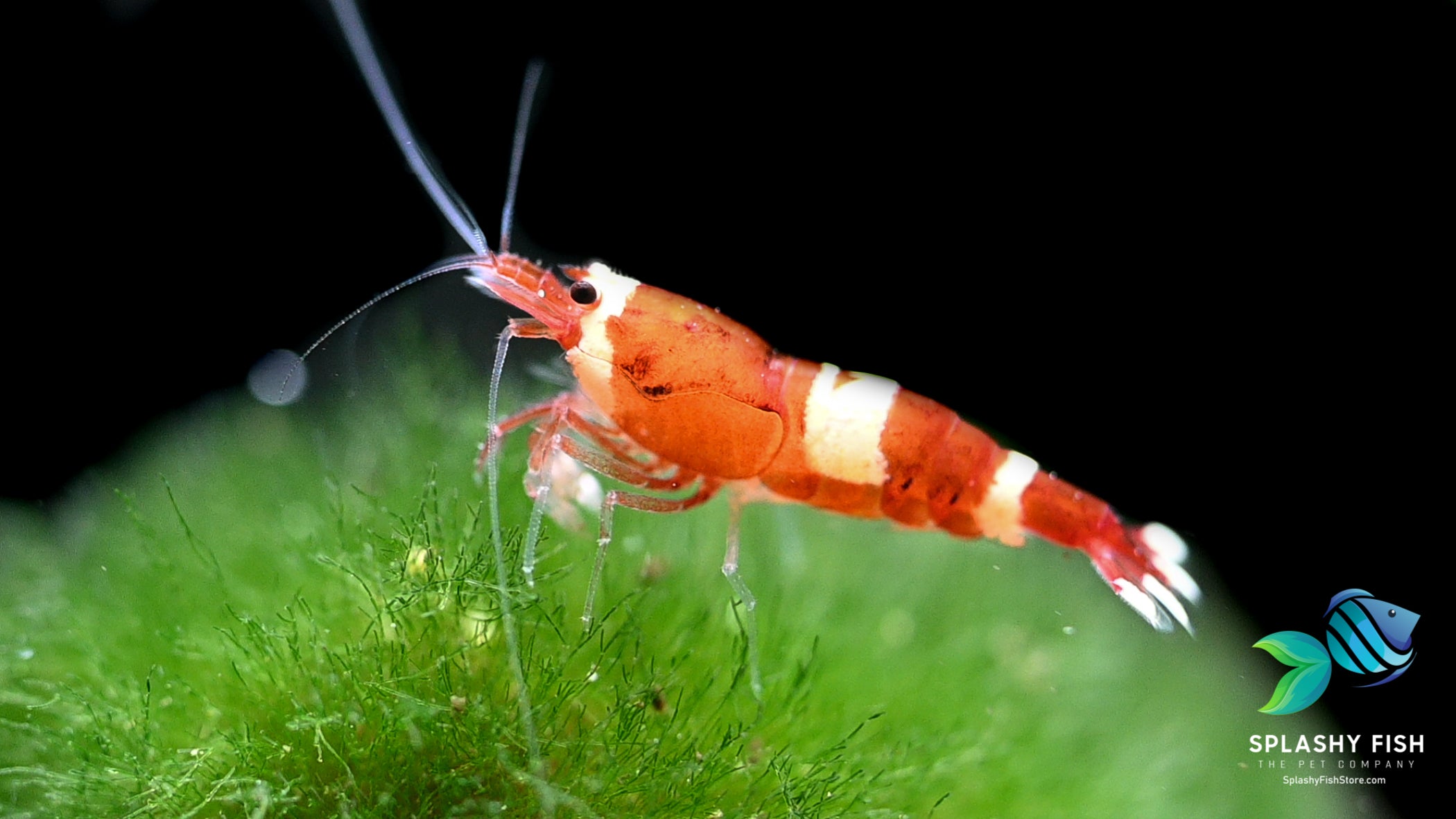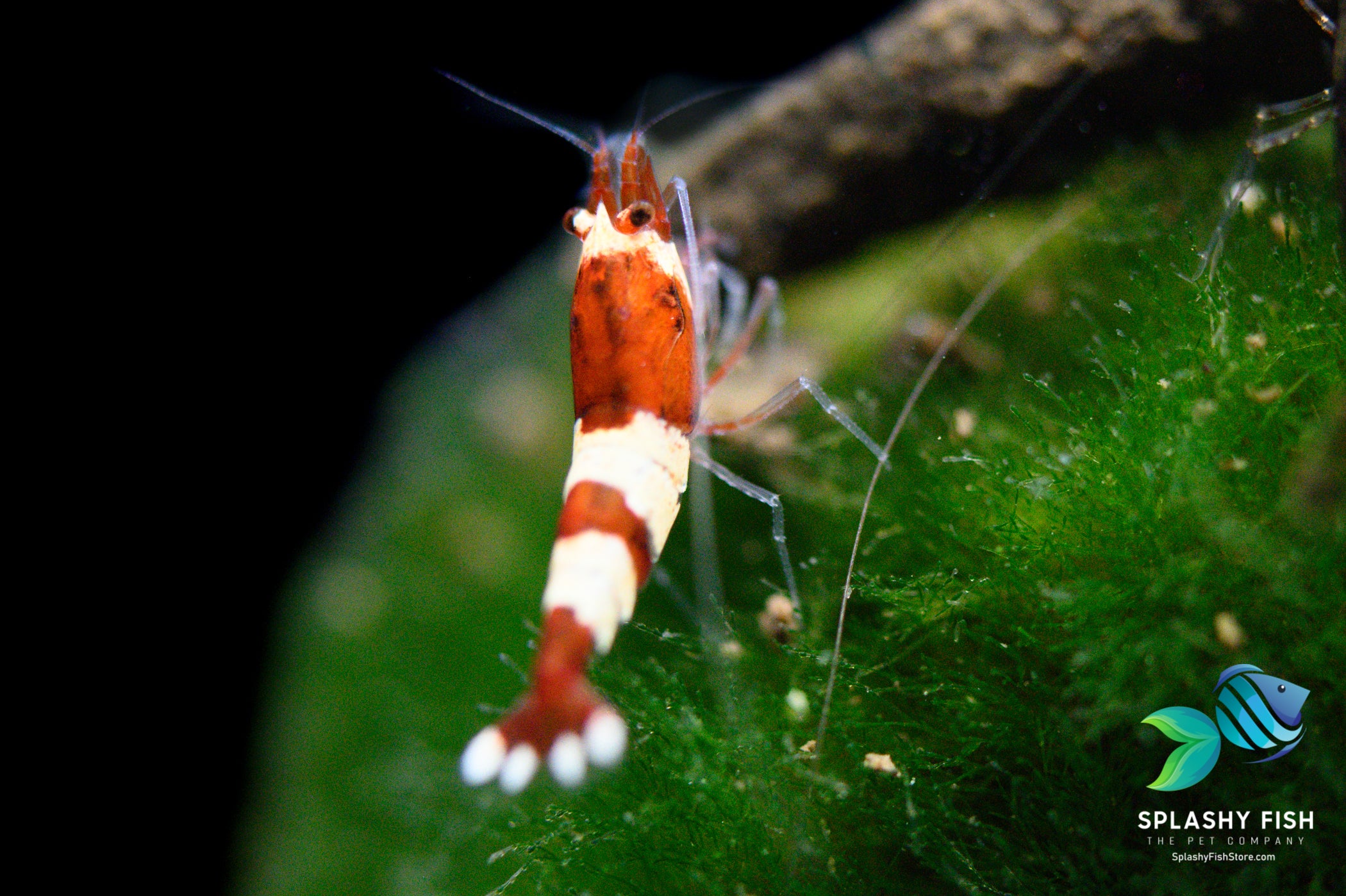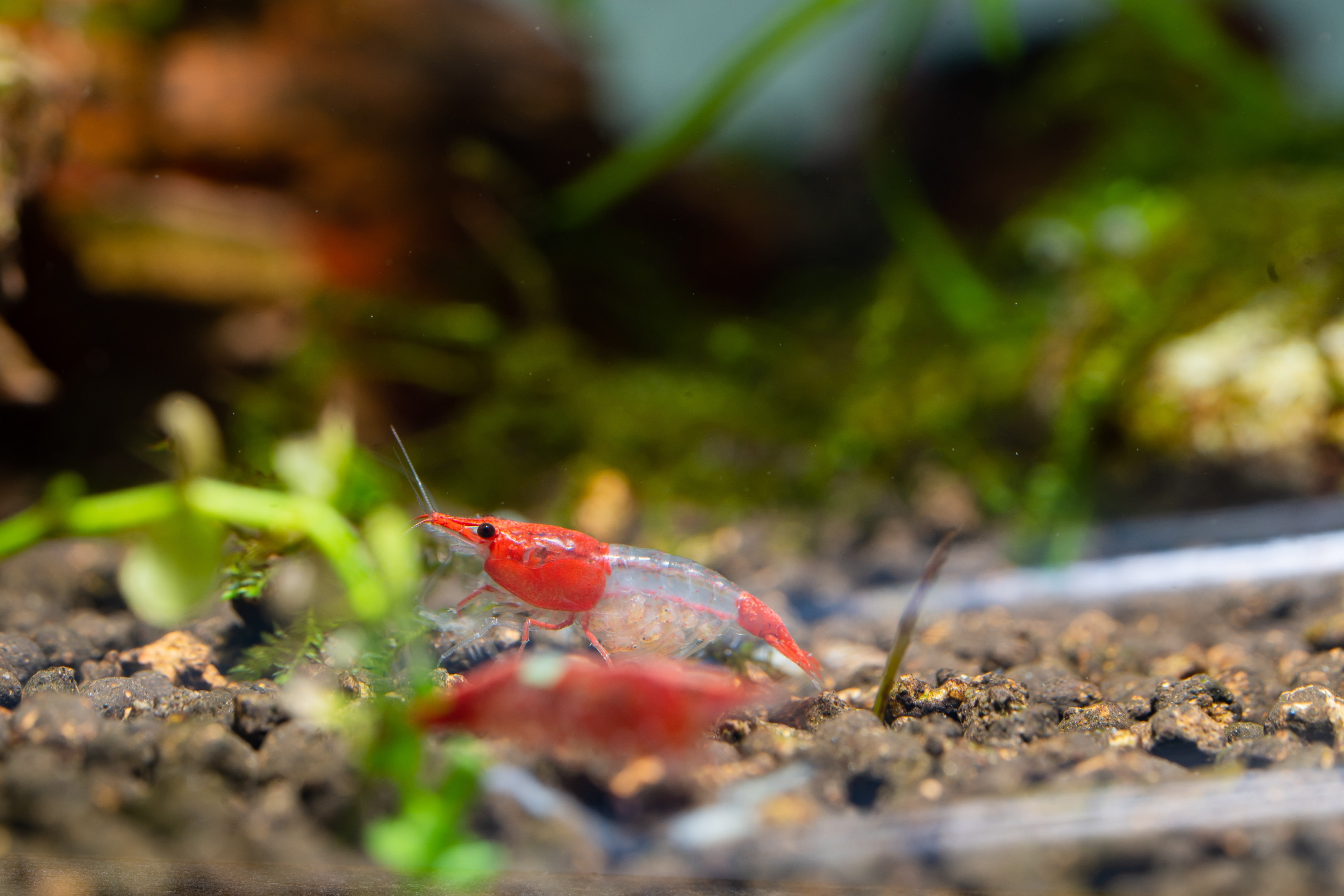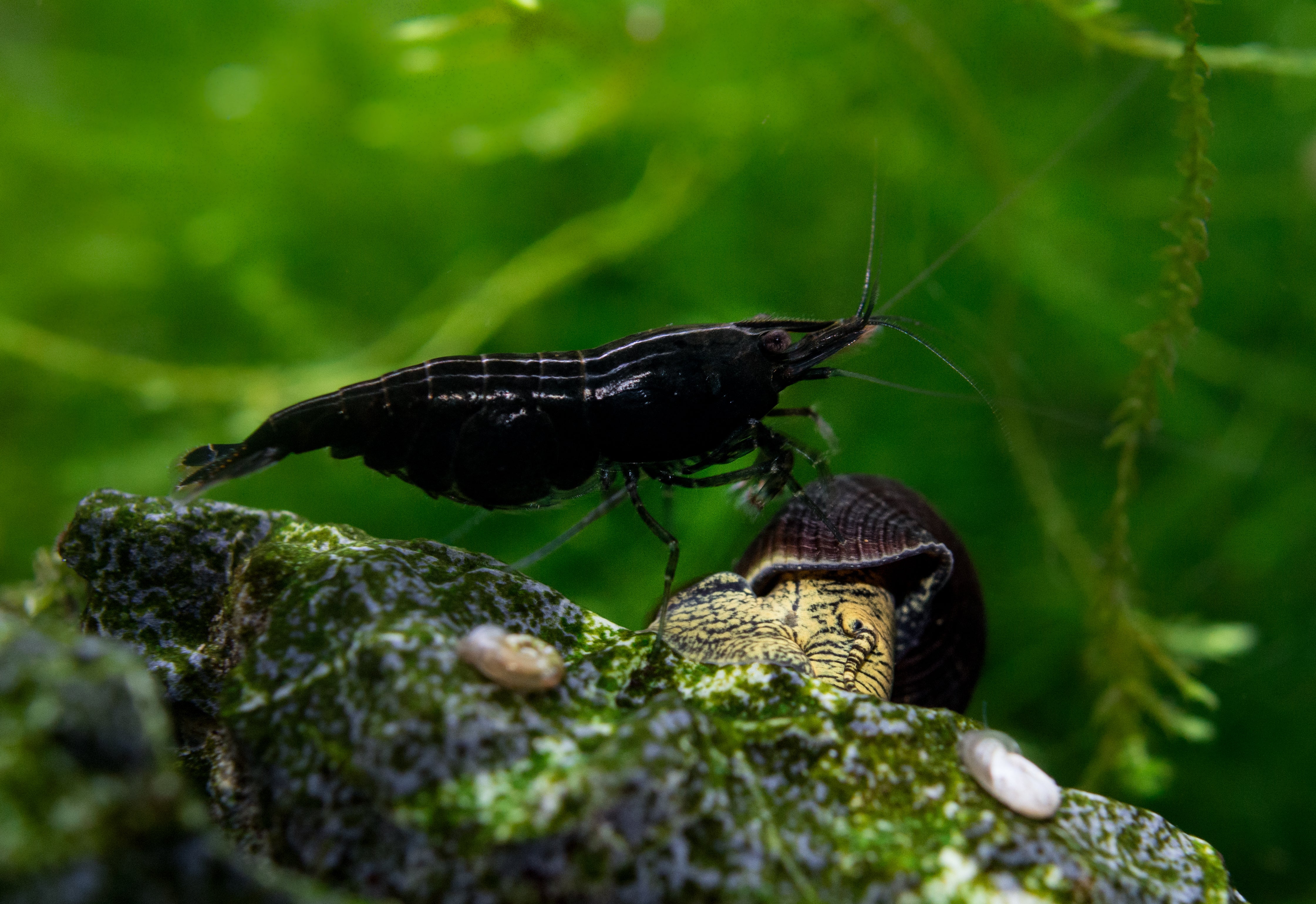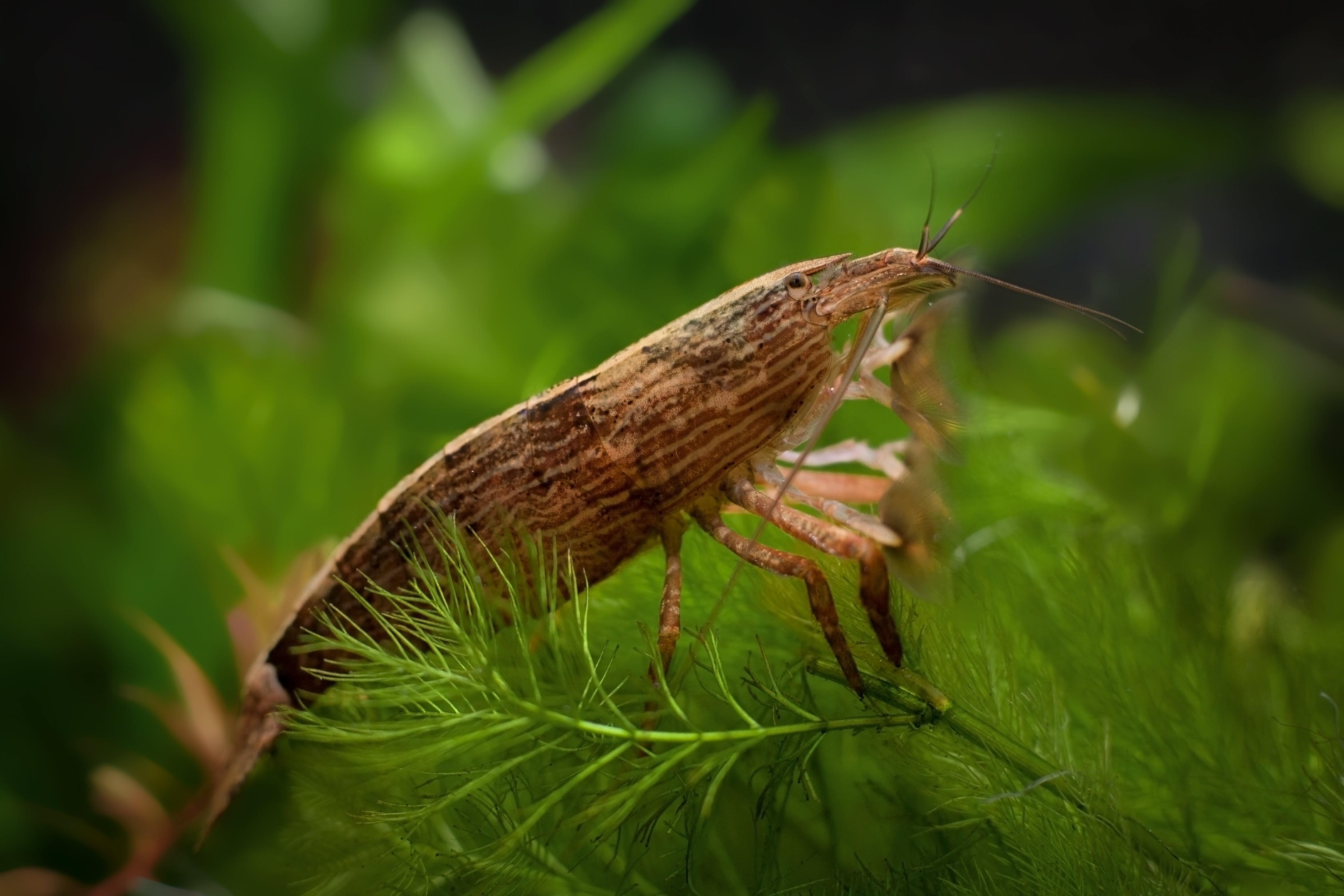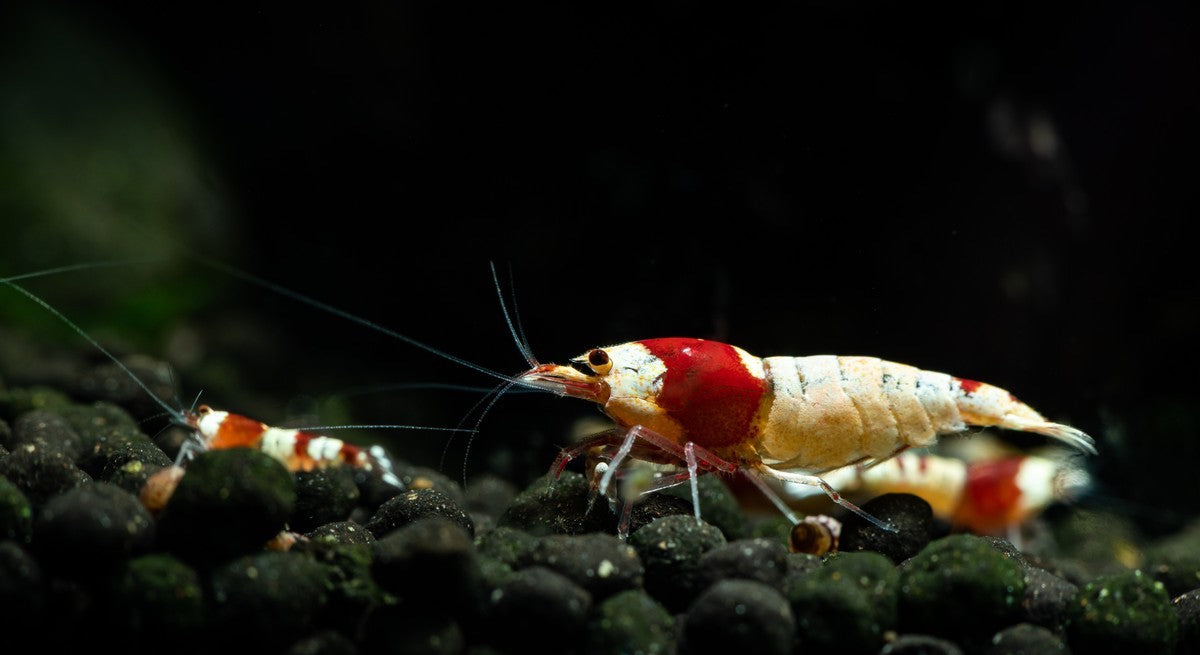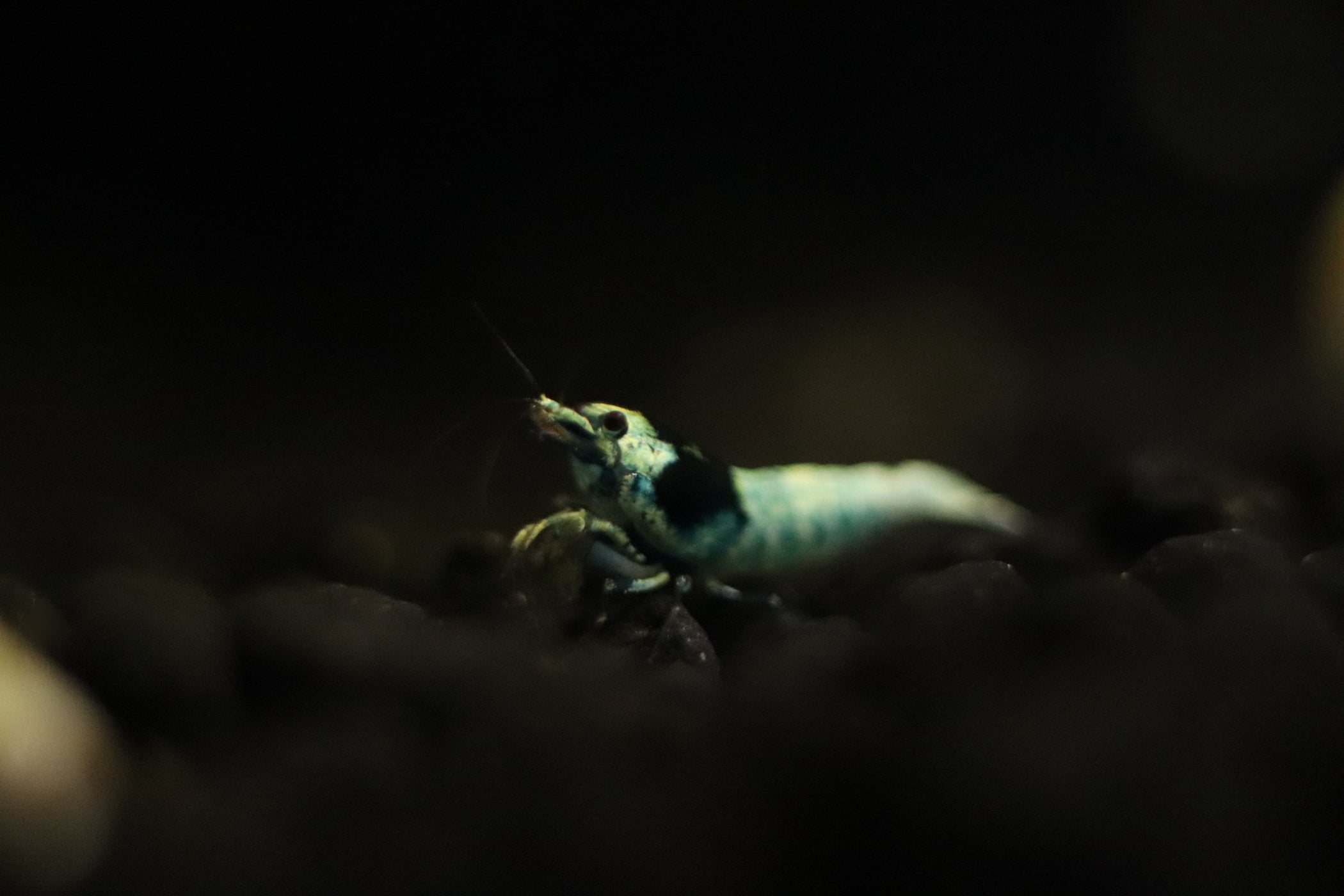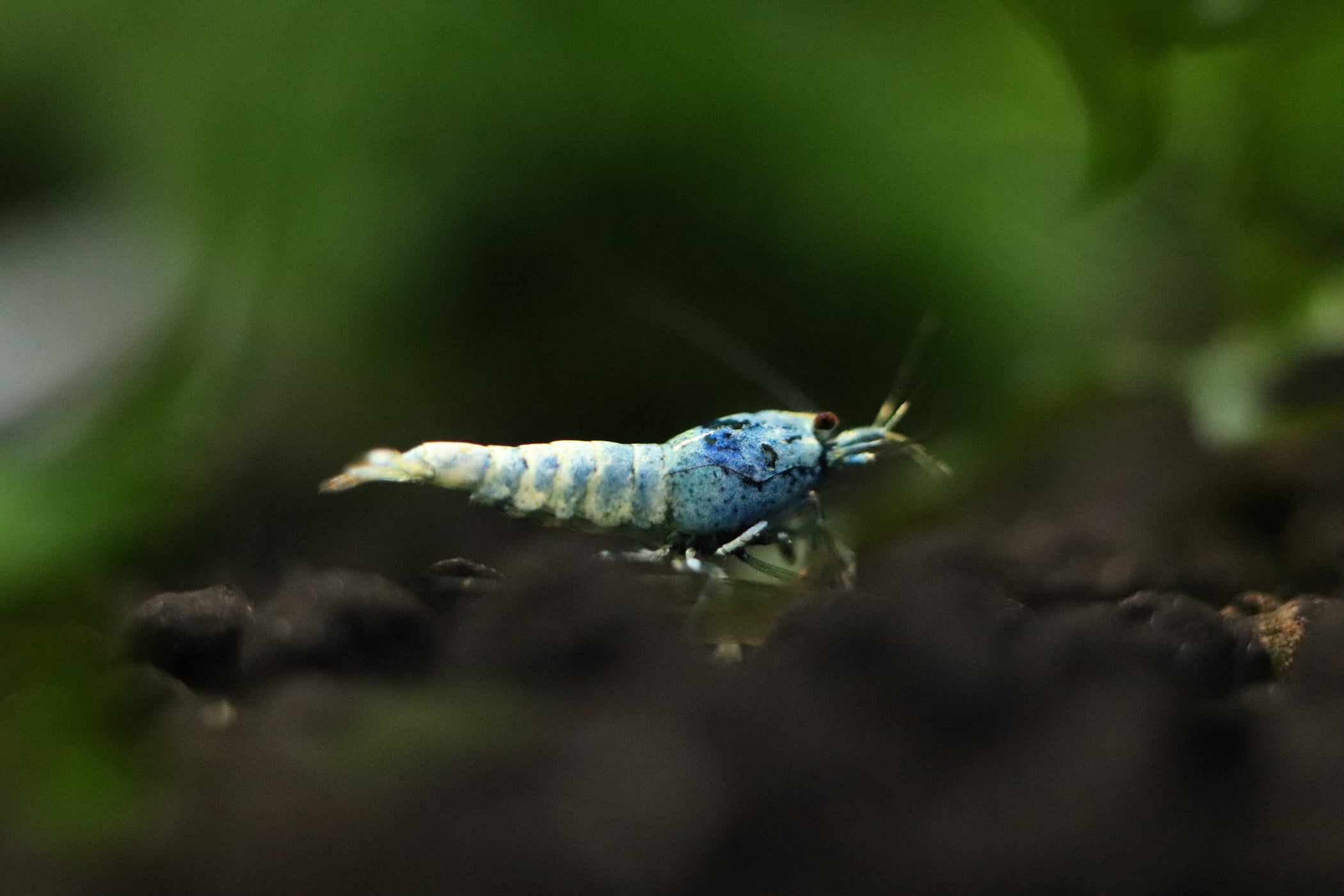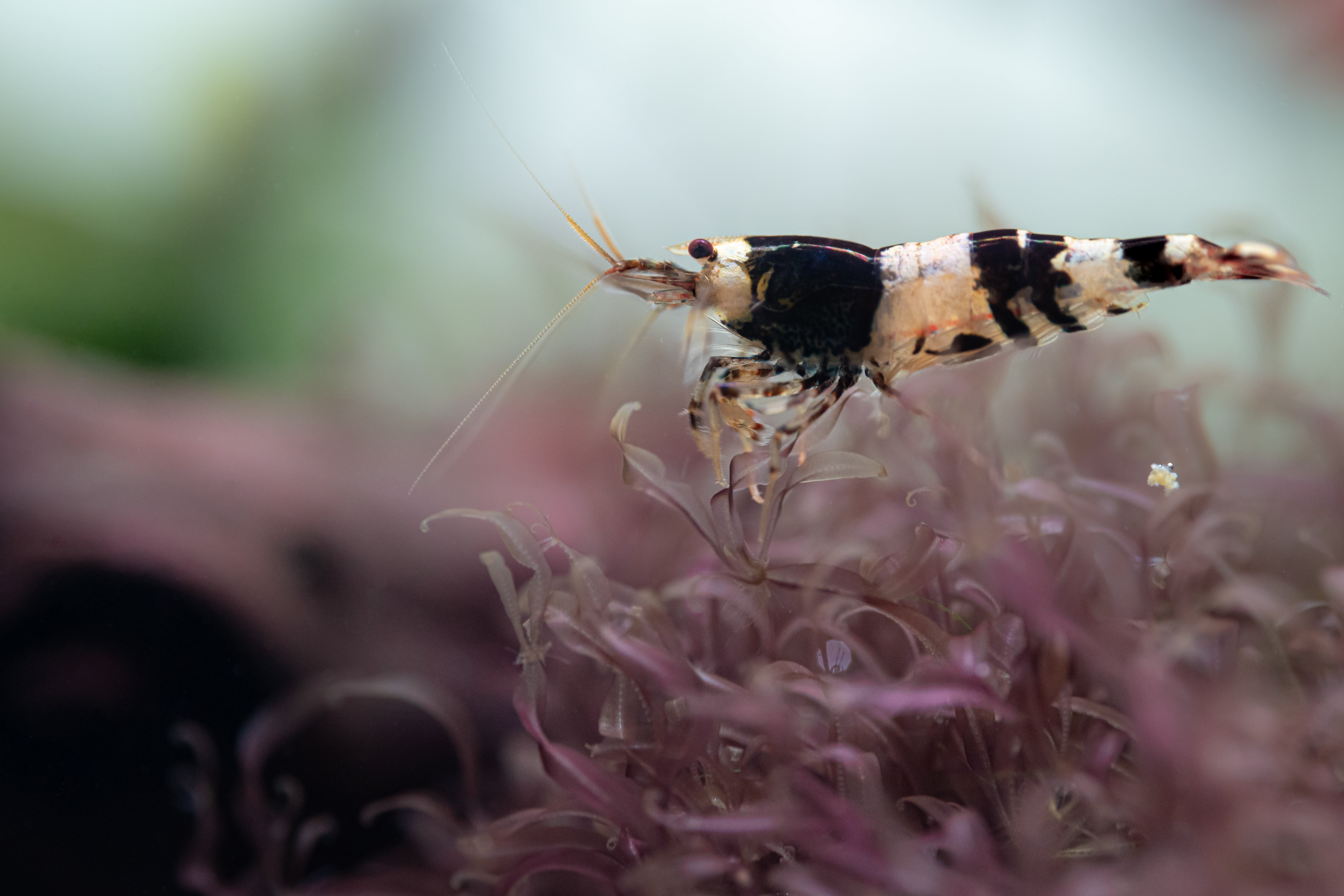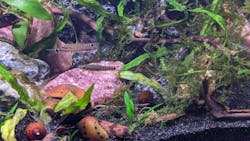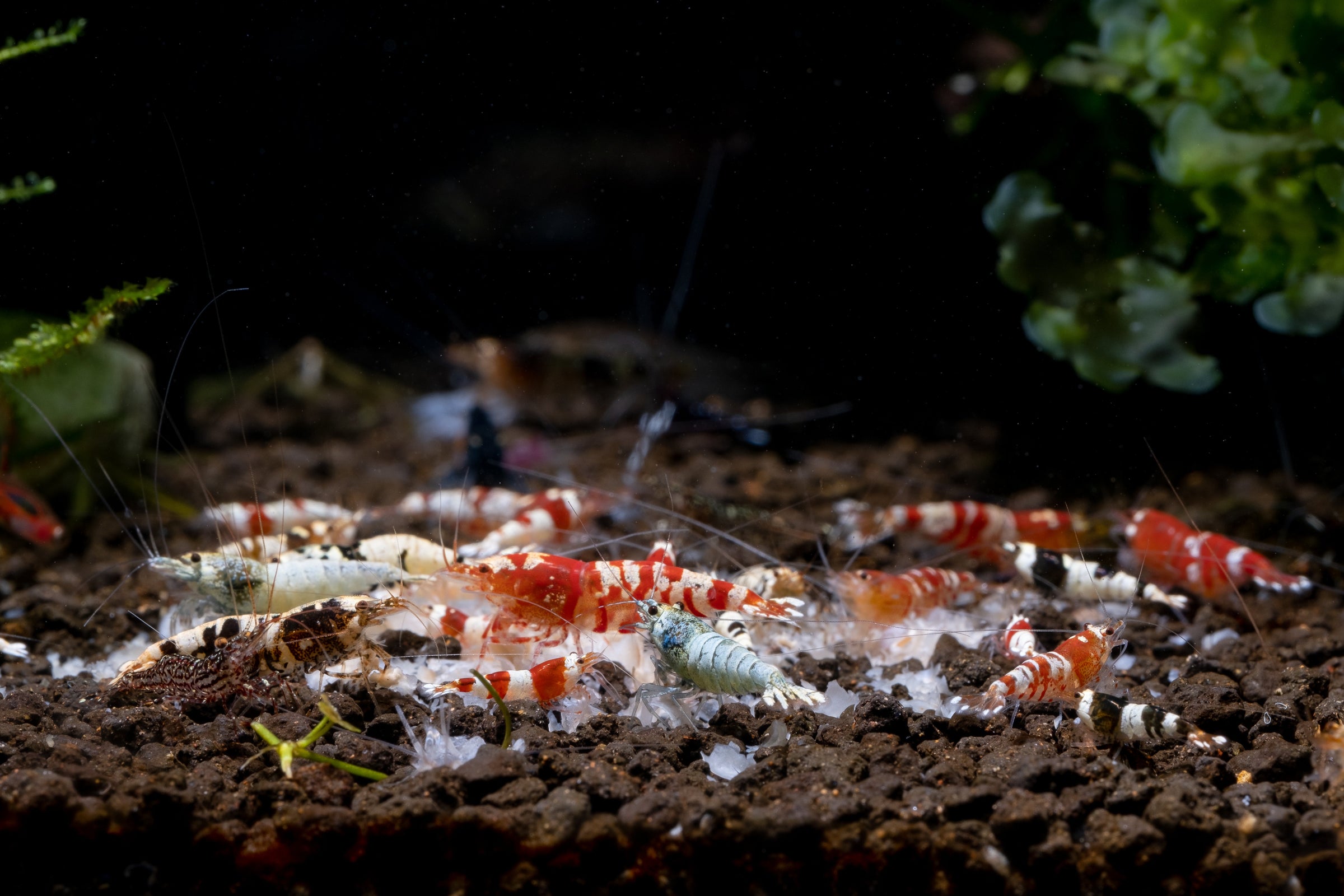
Freshwater Shrimp
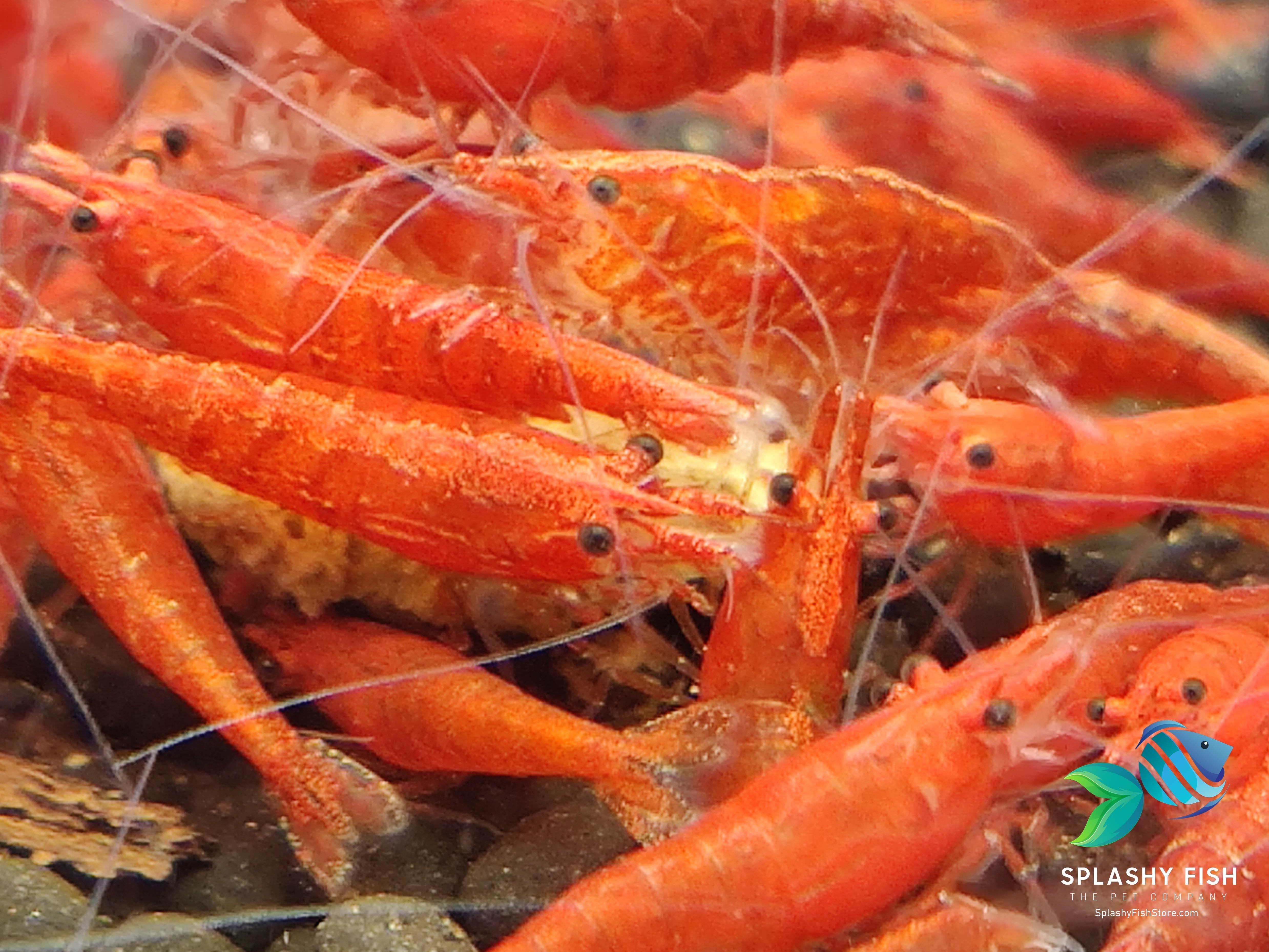
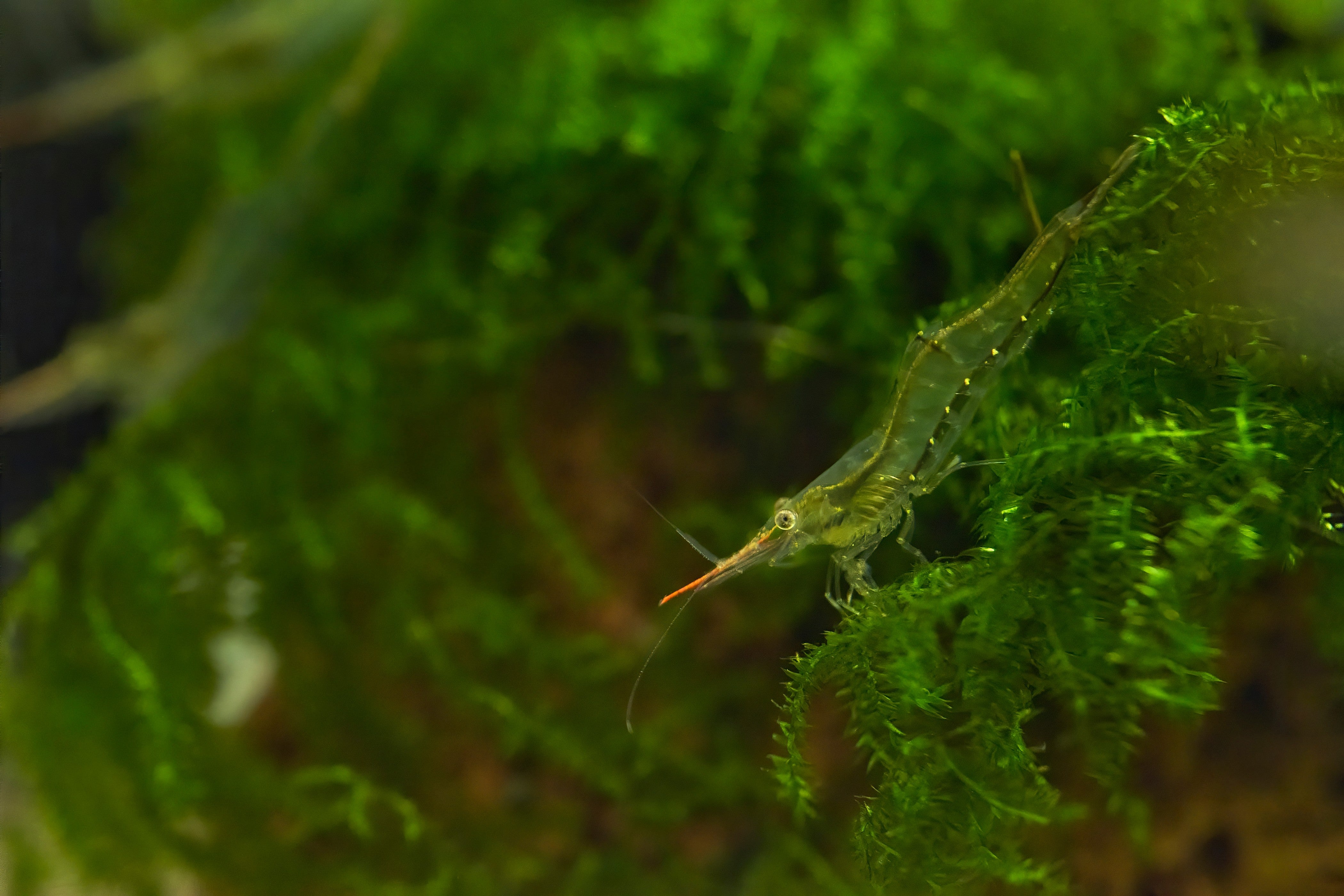
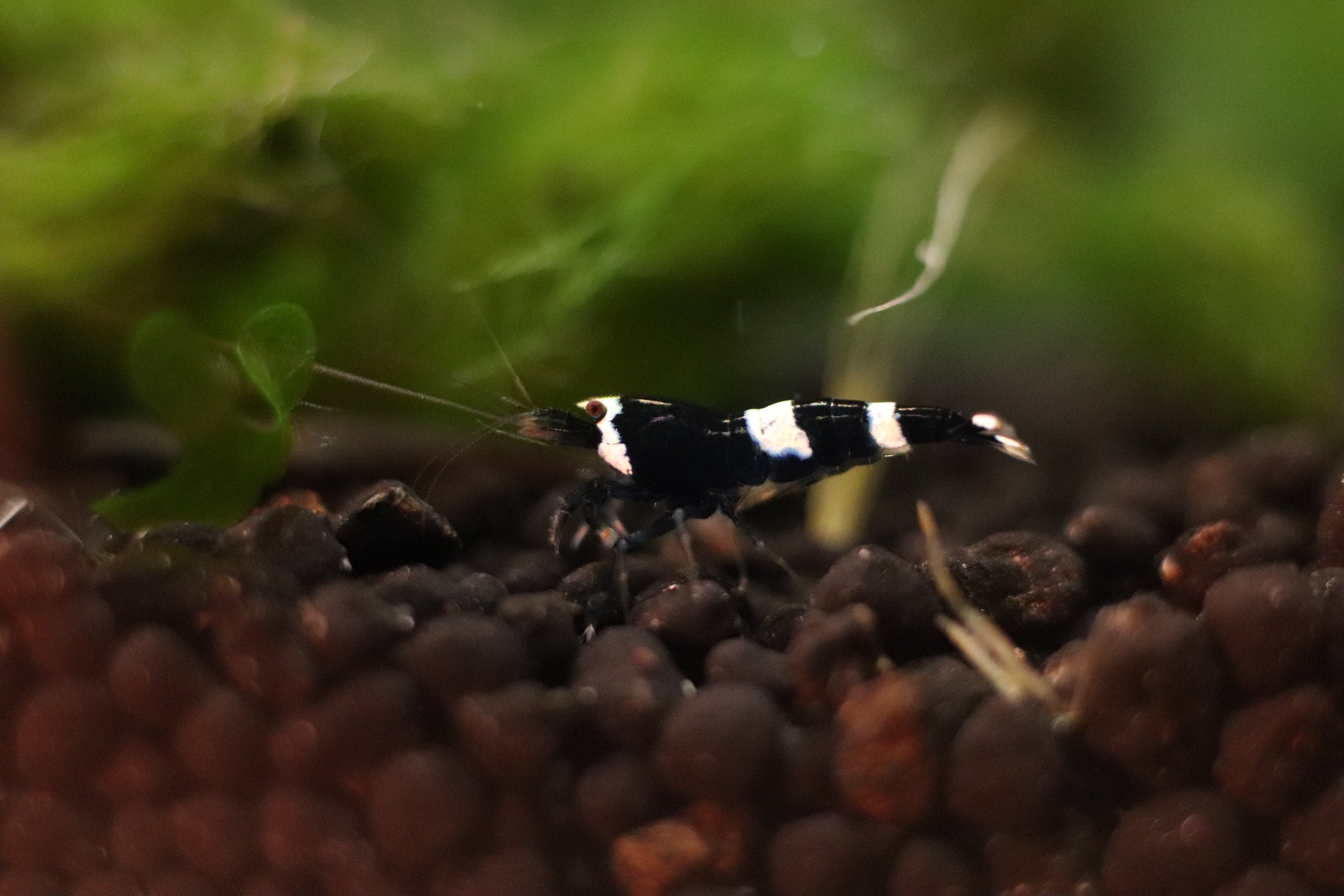
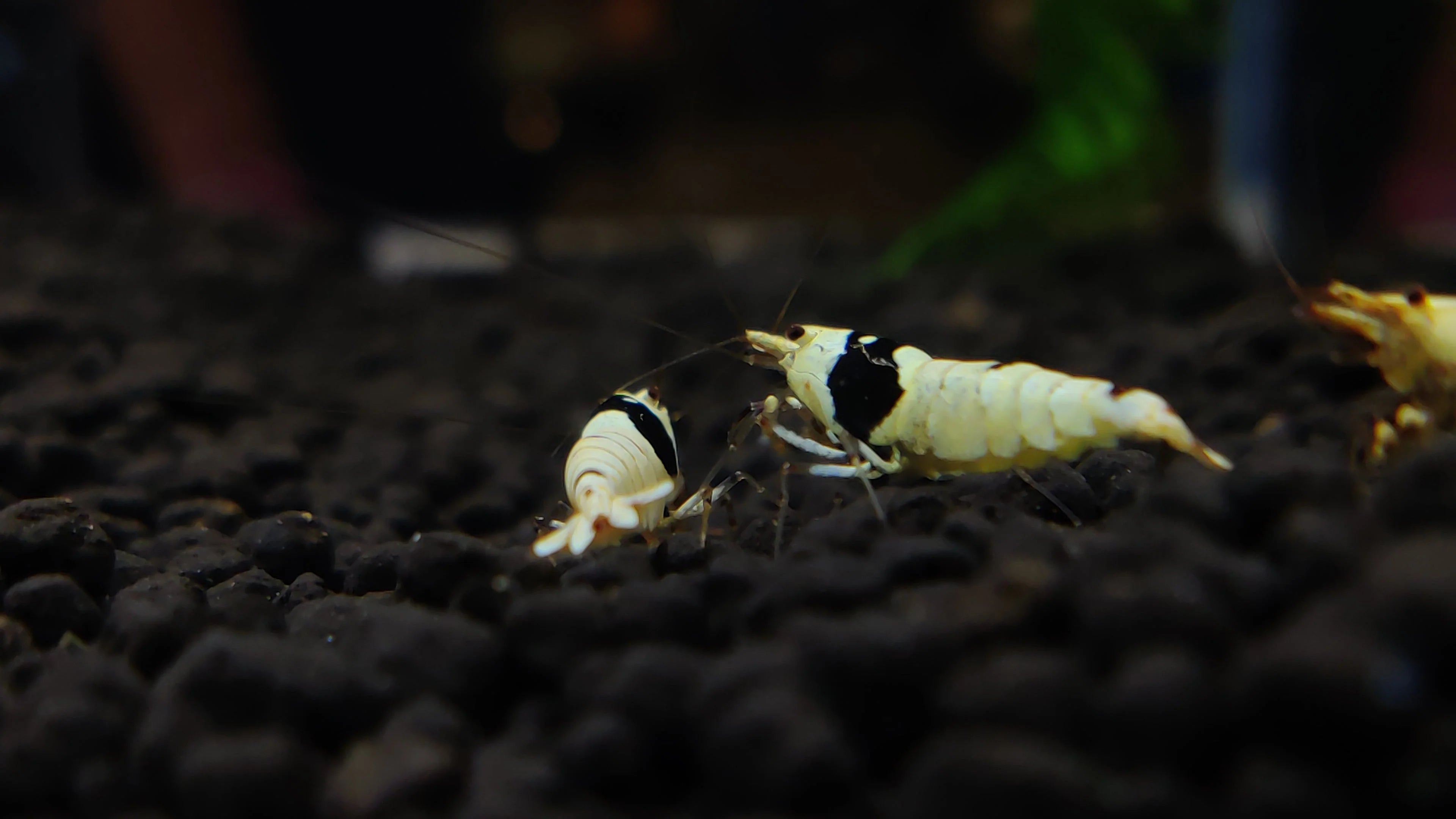

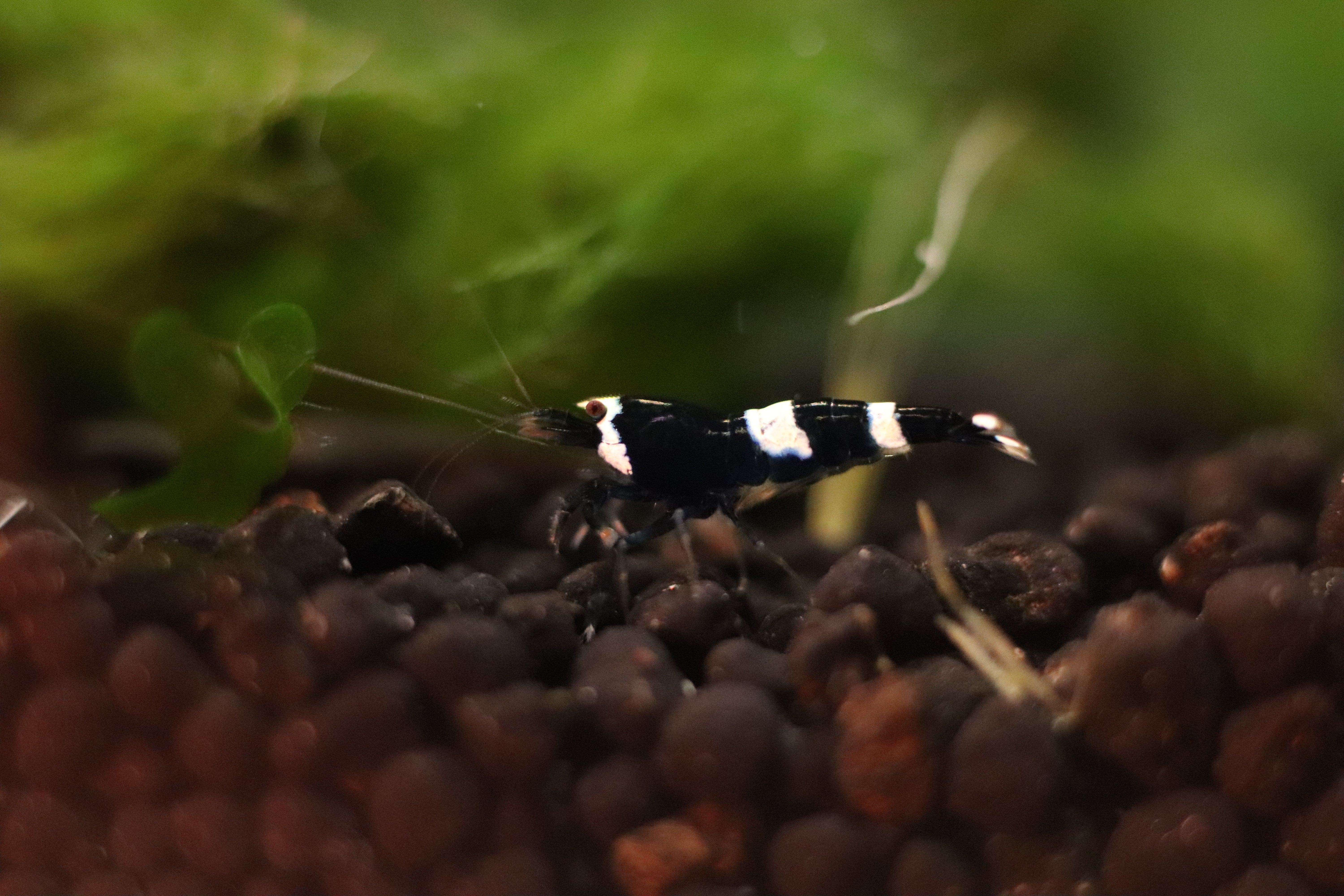
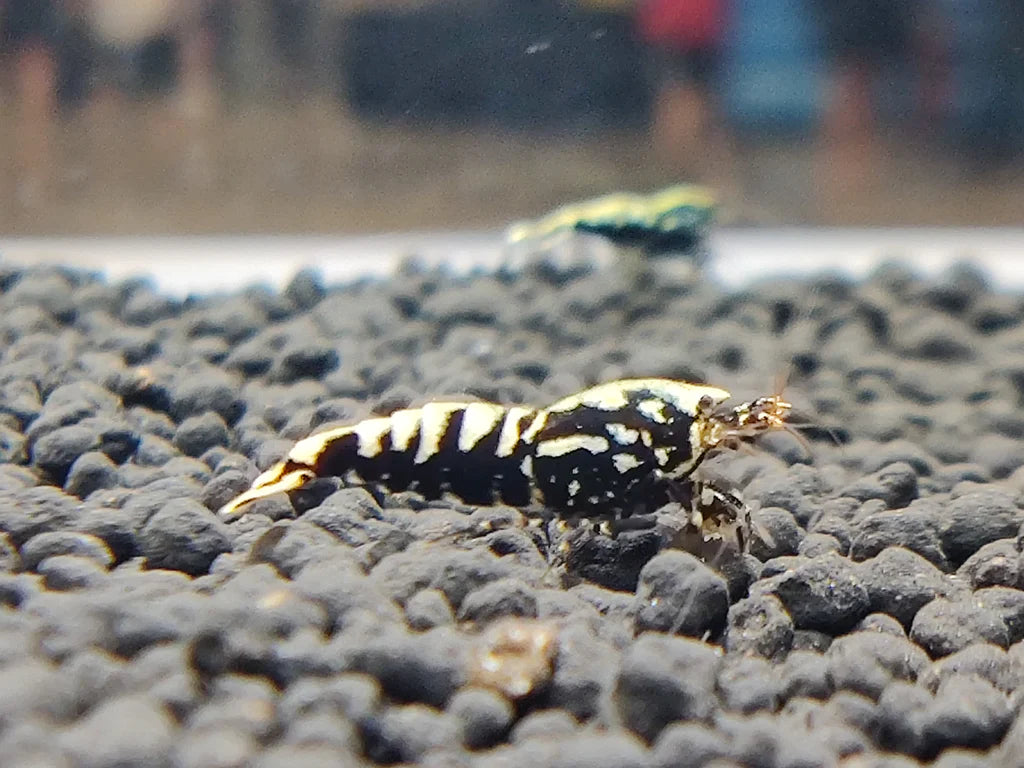
Freshwater shrimp are popular products and great additions to many aquariums with plants and moss such as Marimo Moss Balls, Java Moss For Sale. At Splashy Fish tropical fish store, we guarantee these aquarium shrimp for sale selection are healthy, tank breeding, at a competitive price. Some of the most popular shrimps are red cherry shrimp, bloody mary shrimp, Amano shrimp, snowball shrimp, Caridina shrimp and blue bolt. Neocaridina davidi can keep with tropical fish, and freshwater snails. These aquarium freshwater shrimps require intermediate experience or research before keeping them, especially learning about water parameters such as PH, GH, KH. Having botanicals, good substrate, and freshwater aquarium plants will help the shrimp to thrive and provide room for juvenile shrimp to grow. Please ensure your aquarium is ready and fully cycled before shopping for these shrimp. Red shrimp are the most popular and easiest freshwater shrimps for sale, while green jade shrimp is the hardest shrimp to breed in the fish-keeping hobby. Ensure to give your shrimp pets a healthy diet with high protein and high fiber content. We recommend ordering 20 or more shrimps to add to your cart if you want to have a good colony to start breeding.
You can get more info about the Care Guide for Freshwater Shrimp and shipping information here.
At Splashy Fish Store, our freshwater shrimp for sale are carefully hand-selected and quarantined before shipping to ensure the highest quality when the order comes to our customers. Visit us to buy these freshwater shrimp online or at our aquarium store in Virginia for more other Neocaridina shrimp for sale, Caridina shrimp for sale, freshwater fish for sale, aquatic shrimp for sale and live aquatic plants for sale.
Freshwater Shrimp Frequently Asked Questions FAQs
Will shrimp in the freshwater breed?
Yes, freshwater shrimp, such as cherry shrimp, crystal red shrimp, and blue dream shrimp, can breed in a home aquarium under the right conditions. They are prolific breeders given appropriate water parameters, hiding places, and a stable environment.
What type of shrimp eat algae?
Freshwater shrimp such as Bamboo Shrimp, Yellow Goldenback Shrimp omnivorous and can eat various foods, including algae. Certain species are especially known for their algae-eating habits, aiding in aquarium ecosystem balance. For instance, Amano shrimp consume green, brown, and hair algae. While Neocaridina shrimp mainly eat detritus and biofilm, they're less efficient at algae control compared to other species.
Can freshwater shrimp live with fish?
Yes, freshwater shrimp can often coexist peacefully with certain types of fish in a well-maintained aquarium and big enough tank size. Freshwater shrimp can live with Ember Tetras, Chili Rasboras, Strawberry Rasboras, Pygmy Corydoras, and other fish that are considered nanofish.
Discover the Secrets of Freshwater Shrimp Care: An Advanced Guide for Aquarists
Welcome to the advanced guide for aquarists looking to master the art of freshwater shrimp care. In this comprehensive article, we will provide you with the essential knowledge and techniques to ensure the health and happiness of your shrimp tank inhabitants. Caring for freshwater shrimp can be a rewarding experience, but it also requires a deeper understanding of their specific needs and behavior. From selecting the right species to creating the perfect habitat, we will cover it all. Throughout this guide, you will learn about the ideal water parameters, appropriate tank size, feeding requirements, and how to maintain optimal water conditions. We will delve into the intricacies of breeding and provide insights into managing potential challenges such as disease prevention and treatment. Whether you are a seasoned shrimp enthusiast looking to expand your knowledge or a beginner eager to provide the best care for your new shrimp pets, this advanced guide is an essential resource. Get ready to take your freshwater shrimp care to the next level and create a thriving aquatic environment for these captivating creatures.
Understanding The Different Species of Freshwater Shrimp
One of the first steps to mastering shrimp care is understanding the various species and their unique requirements. Not all freshwater shrimp are created equal—some are more resilient, while others require specific care to thrive. Here’s a breakdown of popular freshwater shrimp species:
Neocaridina Shrimp
Neocaridina shrimp are among the hardiest species, making them ideal for beginners and advanced aquarists alike. Red Cherry shrimp and Blue Dream shrimp are popular choices. Their adaptability to a range of water parameters makes them less prone to diseases.
Caridina Shrimp
These freshwater shrimp species, including the Crystal Red Shrimp and Amano Shrimp, tend to be more delicate and require stable water parameters. Advanced aquarists prefer Caridina Shrimp for their striking color patterns but must be cautious of fluctuating tank conditions.
Sulawesi Shrimp
Sulawesi shrimp come from specific lakes in Indonesia and have more precise water needs. They're not suitable for beginners but are a rewarding challenge for experienced aquarists due to their beautiful colors.
Understanding the differences in care between Neocaridina, Caridina, and Sulawesi shrimp will help you tailor your tank and techniques for optimal results. Choosing the right aquarium shrimp species based on your expertise is essential for long-term success.
Setting Up The Perfect Freshwater Shrimp Tank
Creating an ideal habitat is crucial for your shrimp's well-being. Proper tank setup involves more than simply filling a tank with water and adding plants. Let’s explore the steps to ensure your shrimp have a healthy environment:
Tank Size
A minimum of 10 gallons is recommended for most shrimp species, although larger tanks are preferable for more stable water parameters. Bigger tanks also provide more surface area for biofilm, which shrimp graze on, and help reduce territorial disputes.
Substrate
Shrimp thrive best with a planted tank. A nutrient-rich aquarium substrate will help plants grow, providing shrimp with hiding spots and surfaces to graze. For Neocaridina species, an inert substrate like sand is sufficient, while Caridina shrimp, especially those from soft water environments, benefit from a substrate that buffers pH.
Aquascaping
Incorporate freshwater plants such as Java Moss, Anubias, Vallisneria, and Cryptocoryne, which provide shelter and food for shrimp. Driftwood and stones also offer excellent surfaces for biofilm development, a vital part of a shrimp's diet. Floating plants like Salvinia help in reducing light intensity, which shrimp prefer.
Filtration and Aeration
A gentle sponge filter is ideal for shrimp tanks, as it provides biological filtration without the risk of sucking shrimp into the filter. Maintaining a well-oxygenated environment is also important, especially in tanks with dense plant life.
Lighting
Shrimp don’t require strong lighting, but plants do. A moderate aquarium lighting setup of 6-8 hours daily will ensure healthy plant growth without stressing your shrimp.
Water Parameters and Temperature Requirements for Freshwater Shrimp
Maintaining stable water parameters is one of the most critical aspects of shrimp care, particularly for sensitive species like Caridina shrimp. Here are the key factors to monitor:
Temperature
Most freshwater shrimp species thrive in temperatures between 72-78°F (22-25°C). Neocaridina shrimp are more flexible and can tolerate a broader range, but Caridina shrimp prefer cooler waters closer to 70°F (21°C).
pH
Neocaridina shrimp can handle pH levels between 6.5 and 8, while Caridina shrimp require slightly acidic conditions, with pH levels ranging from 5.8 to 6.8. Always use a water test kit to monitor the pH regularly.
GH (General Hardness) and KH (Carbonate Hardness
Neocaridina shrimp prefer GH levels between 6-8 dGH and KH levels between 2-4 dKH. Caridina shrimp prefer softer water with GH between 4-6 dGH and KH as low as 0-2 dKH. Using reverse osmosis (RO) water and remineralizing it can help you achieve the precise hardness levels needed.
TDS (Total Dissolved Solids)
TDS levels indicate the concentration of dissolved substances in the water. For Neocaridina shrimp, TDS should be between 200-300 ppm, while Caridina shrimp require TDS levels between 100-150 ppm. Regular testing and using shrimp-specific mineral supplements ensure you maintain optimal levels.
Consistency in these water parameters is key. Regular testing and minor adjustments help prevent stress and health issues in your shrimp.
Feeding and Nutrition for Freshwater Shrimp
A balanced diet is essential to maintain healthy, vibrant shrimp. While shrimp naturally feed on algae, biofilm, and plant detritus, supplementing their diet ensures they get all the nutrients they need:
- Commercial Shrimp Foods: High-quality shrimp pellets or flakes, such as those from brands like Envy Shrimp Food or KatsAquatics, provide balanced nutrition with essential vitamins and minerals.
- Vegetables: Blanched spinach, zucchini, and cucumber are excellent additions to a shrimp's diet, offering fiber and other nutrients.
- Protein Supplements: Once a week, provide protein-rich foods like algae wafers or shrimp-specific protein pellets, especially for breeding shrimp.
- Biofilm and Algae: Encourage natural biofilm growth by adding Indian Almond Leaves (Catappa) and aquarium driftwood to your tank. Biofilm provides a steady food source and encourages healthy bacteria in your tank.
Feeding shrimp small amounts daily helps maintain their health while preventing overfeeding, which can lead to poor water quality.
Tank Mates and Compatibility for Freshwater Shrimp
Choosing the right tank mates is crucial when keeping freshwater shrimp, as not all freshwater fish or invertebrates are suitable for a shrimp tank. The goal is to create a peaceful environment where shrimp can thrive without stress from aggressive species. Here’s a more in-depth look at shrimp-friendly tank mates and species to avoid:
Best Tank Mates for Freshwater Shrimp
Small, Peaceful Fish
Some aquarium fish species are safe to keep with shrimp as they are generally non-aggressive and won’t harass or prey on shrimp:
- Harlequin Rasbora: Known for their peaceful demeanor, Harlequin Rasboras are excellent companions for shrimp. These Rasbora fish prefer similar water conditions and won’t disturb shrimp or their young.
- Ember Tetras: These tiny, peaceful Tetra fish are ideal for smaller shrimp species like Neocaridina. Their small size means they pose little to no threat to shrimp.
- Black Neon Tetras and Cardinal Tetras: These colorful Tetra species are popular in community tanks and generally ignore adult shrimp. However, they may eat shrimp larvae, so providing plenty of hiding spots for baby shrimp is crucial.
- Otocinclus Catfish: Otocinclus are algae-eating fish that won’t bother shrimp. They share the same love for a well-planted tank and help keep algae levels in check.
- Corydoras Catfish: These bottom-dwelling catfish are non-aggressive and make excellent tank mates for shrimp. Corydoras can help clean the substrate without posing any danger to shrimp.
Other Invertebrates
- Nerite Snails: These freshwater snails are fantastic algae eaters and pose no threat to shrimp. Nerites are also beneficial for maintaining water quality, as they help clean algae off surfaces.
- Mystery Snails: These large, slow-moving snails coexist well with shrimp. Mystery Snails won’t harm shrimp and can assist in cleaning up detritus.
- Amano Shrimp: If you're looking to keep multiple shrimp species, Amano shrimp are a great option. They’re peaceful and focus on algae control, leaving other shrimp species alone.
- Dwarf Crayfish (Cambarellus): Unlike larger crayfish, dwarf crayfish are generally shrimp-safe. They are less aggressive and can coexist with adult shrimp in a well-structured tank with hiding spots.
Species to Avoid
Not all fish and invertebrates are suitable for a shrimp tank. Avoid the following species:
- Bettas: Bettas are notorious for attacking shrimp, mistaking them for food. Although some aquarists report success keeping Bettas with shrimp, it’s generally not recommended due to the risk of aggression.
- Cichlids: Species like Angelfish, Discus, and Oscars are natural predators of shrimp and will likely hunt them down in the tank.
- Goldfish: Goldfish will eat shrimp and are generally not compatible with the water parameters shrimp require. They also produce a lot of waste, making it harder to maintain the clean water conditions that shrimp need.
- Large Predatory Fish: Any large fish, such as Arowanas, Clown Loaches, or Barbs, are too aggressive and will likely view shrimp as food.
- Crayfish: Most large crayfish species are too aggressive to keep with shrimp. They can attack and kill shrimp, especially during molting when shrimp are vulnerable.
Best Live Aquatic Plants for Freshwater Shrimp
Aquatic plants play a vital role in creating a healthy, balanced shrimp tank. Not only do plants provide essential hiding spots, but they also promote biofilm growth, which is a primary food source for shrimp. Here's a detailed look at the best aquatic plants for shrimp tanks:
Benefits of Aquatic Plants for Shrimp
- Hiding Spots: Shrimp, especially juveniles, need places to hide from predators and even larger shrimp. Dense planting helps reduce stress and encourages natural behaviors.
- Food Source: Many aquarium plants develop a layer of biofilm on their surfaces, which shrimp will graze on. Plants also help trap debris and leftover food, further supporting biofilm development.
- Water Quality: Live plants help filter the water by absorbing nitrates and other harmful substances, making them essential for maintaining clean, shrimp-friendly water conditions.
- Oxygenation: Aquatic plants contribute to oxygenating the water, promoting a healthy environment for shrimp and other tank inhabitants.
Best Aquatic Plants for Freshwater Shrimp Tanks
Java Moss
Perhaps the most popular plant for shrimp tanks, Java Moss provides an abundance of hiding spaces for shrimp, especially baby shrimp. It’s low-maintenance and thrives in various water conditions, making it ideal for both beginners and advanced aquarists. Shrimp love to graze on the biofilm that grows on the moss.
Anubias
This slow-growing plant is perfect for shrimp tanks. It doesn’t require much light or CO2, and its broad leaves are great for biofilm growth. Anubias also provides excellent cover for shrimp, offering them safe areas to molt and hide. Some popular Anubias species include Anubias Nana, Anubias Barteri, and Anubias Nana petite.
Java Fern
Another hardy plant, Java Fern is loved by shrimp keepers for its low light requirements and resilience. This Fern plant doesn’t need to be planted in the substrate, as it grows best when attached to driftwood or rocks, which also encourages biofilm formation.
Cryptocoryne
These plants are great for shrimp tanks because of their sturdy leaves and ability to thrive in low to medium-light conditions. Cryptocoryne species like Cryptocoryne Wendtii, and Cryptocoryne parva are perfect for creating a natural, forest-like environment for shrimp.
Vallisneria
This fast-growing plant helps oxygenate the water and creates dense areas of cover for shrimp. Vallisneria is particularly useful in larger shrimp tanks as it can quickly spread and fill empty spaces. Vallisneria spiralis and Jungle Val are our best seller of Vallisneria species.
Floating Plants
Floating plants such as Red Root Floater and Salvinia Minima help reduce light penetration, which shrimp prefer. They also assist in controlling algae growth and provide additional biofilm surfaces.
Marimo Moss Balls
These unique spherical algae growths provide a natural grazing surface for shrimp. They help absorb nitrates and provide additional biofilm for shrimp to consume. They’re also aesthetically pleasing and easy to maintain.
Disease Prevention and Common Health Issues in Freshwater Shrimp
Freshwater shrimp are susceptible to a range of diseases, most of which are caused by poor water quality or stress. Here are common health issues and prevention techniques:
- Bacterial Infections: Symptoms include lethargy, discoloration, or white patches. Regular water changes and proper filtration are key to prevention. If an infection occurs, consider adding Indian Almond Leaves or using shrimp-safe antibiotics.
- Molting Issues: Shrimp molt as they grow, but stress or poor water parameters can lead to failed molts. Ensure adequate calcium and mineral levels in the water and avoid sudden parameter changes to promote healthy molting.
- Parasites: Shrimp can occasionally suffer from parasitic infections. Quarantine new additions and inspect shrimp for signs of parasites, such as unusual spots or rapid breathing.
Maintaining optimal water conditions and providing a stress-free environment are the best ways to prevent diseases.
Breeding Freshwater Shrimp: Tips and Techniques
Breeding shrimp is one of the most rewarding aspects of shrimp care, but it requires a stable and carefully monitored environment. Here’s how to encourage successful breeding:
- Stable Water Parameters: Shrimp are more likely to breed when water parameters are stable. Keep temperature and pH within the optimal range for the species you are breeding.
- Ample Hiding Spots: Shrimp feel safer and are more likely to breed in an environment with plenty of hiding spots. Add dense plants like Java Moss and small caves for shelter.
- Diet: Provide a high-protein diet during the breeding season to support egg production and the development of larvae.
- Separation of Larvae: In community tanks, it’s essential to provide hiding spaces for larvae to avoid predation. Breeding tanks are ideal for raising shrimp larvae without interference from other fish.
Advanced Techniques for Enhancing Shrimp Color and Size
For aquarists looking to take their shrimp breeding and care to the next level, enhancing shrimp color and size requires advanced techniques:
- Selective Breeding: Choose shrimp with the most vibrant colors and strongest traits for breeding. Over time, this will result in offspring with more intense hues and larger body sizes.
- Color Enhancing Foods: Some shrimp foods contain ingredients specifically designed to enhance color, such as astaxanthin. These can help improve the vibrancy of red, blue, and yellow shrimp.
- Lighting: Moderate lighting encourages better color development in shrimp. Avoid intense lighting, which can cause stress and dull colors over time.
With consistent care and selective breeding, you can develop shrimp that are not only healthy but also visually stunning.
Conclusion
Freshwater shrimp are beautiful, delicate creatures that can transform any aquarium into a lively ecosystem. Mastering shrimp care requires attention to detail, particularly when it comes to maintaining water parameters, providing the right diet, and understanding their specific breeding needs. By following the techniques outlined in this advanced guide, you will create a thriving environment for your shrimp and enjoy the rewarding experience of watching them flourish. Whether you're breeding vibrant Neocaridina shrimp or maintaining a delicate colony of Caridina shrimp, this guide provides all the tools you need to elevate your shrimp-keeping skills.




















